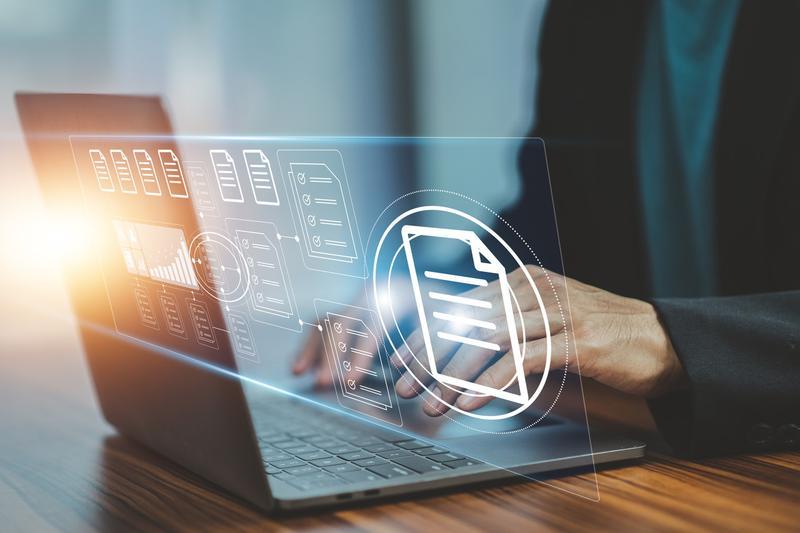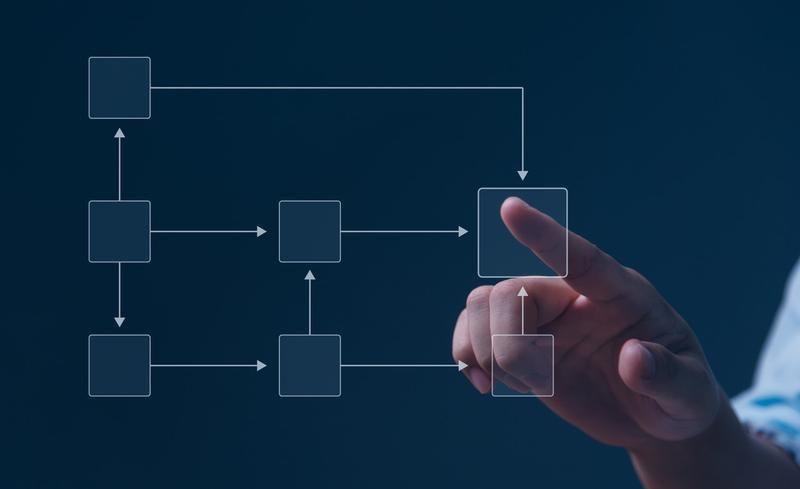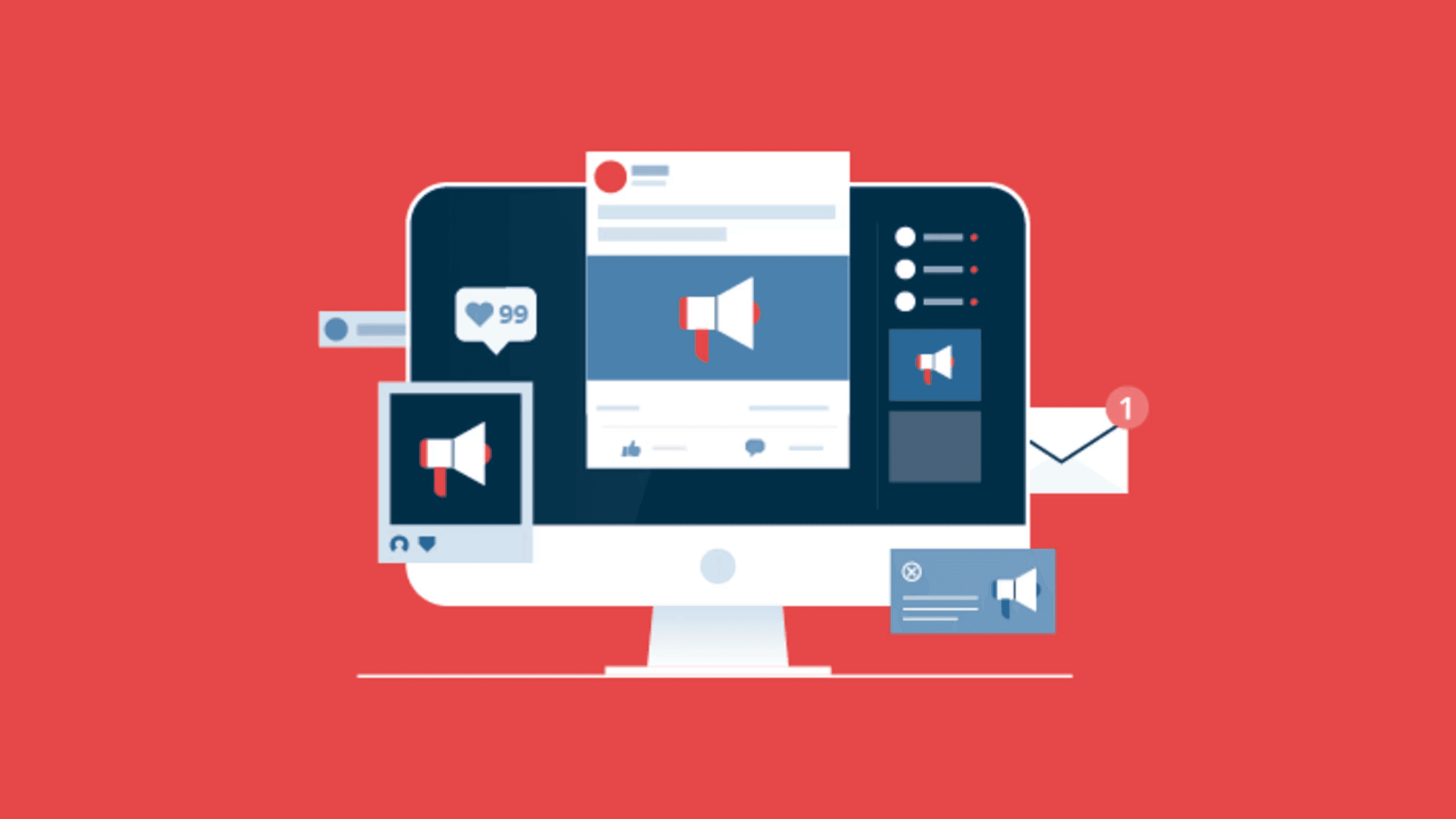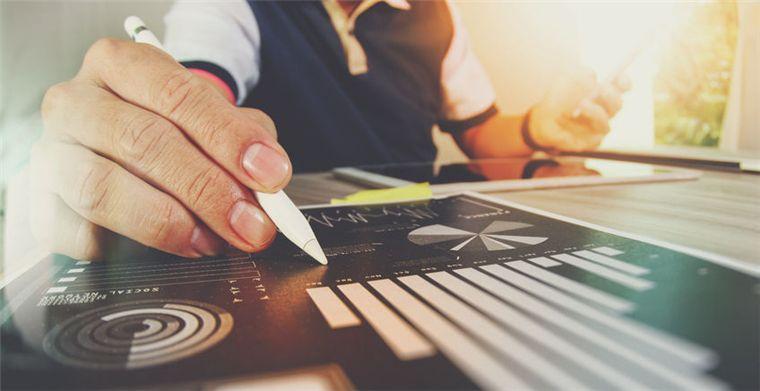手机号码

What is a Resource Catalog and How to Set Up One?
What is a Resource Catalog? A resource catalog is a systematically organized repository that provides detailed information about various data assets within an organization. This catalog serves as a comprehensive inventory, documenting the metadata, location, accessibility, and usage guidelines of data resources. The primary purpose of a resource catalog is to facilitate efficient data discovery, governance, and utilization. By maintaining a centralized catalog, organizations can ensure that data assets are easily searchable and accessible to authorized users, enhancing data transparency and promoting informed decision-making. Key components of a resource catalog typically include: Metadata: Descriptive information about the data assets, such as the title, description, creation date, and author. Metadata helps users understand the context of the data. Data Location: Information on where the data is stored, including database names, file paths, or URLs, enables users to locate and retrieve the data efficiently. Access Controls: Details on who can access the data and under what conditions. This information ensures that sensitive information is protected and only available to authorized personnel. Data Quality Metrics: Information on the accuracy, completeness, and reliability of the data. These metrics help users assess the data’s suitability for their specific needs. Usage Guidelines: Instructions on properly using and interpreting the data, including any relevant standards or best practices. The Need for a Resource Catalog A resource catalog is a centralized repository that organizes and provides detailed information about an organization’s data assets. It is particularly useful in the following scenarios: Data Proliferation As organizations expand, they generate and collect vast amounts of data from various sources such as databases, cloud storage, and external data feeds. This rapid growth makes it challenging to manage and locate specific data assets. A resource catalog is needed to organize and index these data assets in a centralized repository, making it easier for users to find and access the information they need quickly and efficiently. Complex Data Ecosystems Many organizations store data across multiple platforms, databases, and systems, creating a fragmented data landscape. This complexity can hinder effective data management and utilization. A resource catalog provides a unified view of all data assets, regardless of where they are stored. This centralization simplifies data management while ensuring that users can seamlessly find and utilize data from different sources. Data Governance Initiatives Effective data governance is crucial for maintaining data quality, security, and compliance with organizational policies and standards. It involves establishing processes and responsibilities to ensure proper data management. A resource catalog supports these initiatives by documenting metadata, access controls, and usage guidelines, ensuring data is managed according to established policies. Employee Onboarding New employees must familiarize themselves with available data assets to quickly become productive when they join an organization. Understanding the data landscape and knowing where to find relevant information is crucial for their success. A resource catalog is a valuable tool for onboarding new employees by providing a centralized repository of data assets, helping new hires locate and understand the data they need quickly. Cross-Departmental Collaboration In large organizations, different departments often need to share and access data to collaborate effectively on projects and initiatives. Data silos can hinder this collaboration. A resource catalog facilitates data sharing by providing a centralized repository of data assets, promoting integrated business operations, and enabling teams to work together more efficiently. Mergers and Acquisitions Integrating data from different organizations during mergers and acquisitions can be complex. Each entity may have its own data systems, structures, and standards, making consolidating and harmonizing data assets difficult. A resource catalog streamlines the integration process by providing a comprehensive inventory of data assets from both organizations, ensuring that data is organized, accessible, and consistent. How to Set Up a Resource Catalog for Your Organization? Setting up a resource catalog involves several key steps to ensure effective organization and management of data assets. They include: Define Objectives and Scope: Begin by clearly defining the objectives and scope of the catalog. Teams should identify goals such as improving data accessibility, enhancing data governance, or facilitating cross-departmental collaboration should be identified. Additionally, determine the scope of data to be included, whether internal databases, documents, or external data sources. Assemble a Team: Gather a team that includes IT, data management, and business unit representatives. Specific roles and responsibilities should be assigned, such as project manager, data steward, and technical support. Choose the Right Tools: Select a catalog solution that fits the organization’s needs. Think of factors such as ease of use, scalability, integration capabilities, and cost. Ensure the chosen tool integrates seamlessly with existing data systems and platforms. Develop Metadata Standards: Establish a standardized metadata schema that includes key details such as data source, description, owner, creation date, and access controls. Consistency in metadata applications is essential to facilitate easy search and retrieval of data assets to ensure that all data entries are uniform. Populate the Catalog: Conduct a comprehensive inventory to identify, collect, and document metadata for each data asset. Depending on the volume and complexity of the data, enter the metadata into the catalog manually or through automated tools. This step is essential for creating a thorough and accurate catalog. Implement Access Controls: Define and implement access controls to ensure data security and compliance. Role-based access controls streamline permissions management and provide appropriate access based on user roles. This helps maintain security and compliance with organizational policies. Train Users: Develop training programs to educate users on how to navigate and utilize the catalog. Customer support resources such as user manuals, FAQs, and helpdesk support can further assist users. Comprehensive training ensures that users can fully leverage the catalog’s capabilities. Monitor and Maintain: Establish a process for regularly updating the catalog to ensure it stays current and accurate. This step includes adding new data assets, updating metadata, and removing obsolete data. Implementing a feedback mechanism to gather user input and continuously improve the catalog is also important. Creating a Resource Catalog using LIKE.TG Let’s see how a fictitious university leverages LIKE.TG, a leading data management solution provider, to manage a comprehensive resource catalog, including the data resources required by different departments and individuals. Users can create data resources in LIKE.TG’s Data Pipeline Builder and expose them in the resource catalog via LIKE.TG’s data governance solution. For instance, the English department wants to make its database of English results available to other university users through the governance platform. To create a resource catalog in LIKE.TG, the user must first add a Shared Action item to their project in the LIKE.TG Data Pipeline Builder. The user can now configure this shared action with the required Database Source of English results. This shared action, consisting of the English results database as the source, can then be enabled for cataloging and deployed on the LIKE.TG server from the context menu of the asset in the Project Explorer. Once the asset is deployed, it can be viewed in the resource catalog by navigating to Governance > Data Artifacts in the menu bar. The asset is now visible in the Resource Catalog on the governance platform. The user can similarly add all required assets the university needs and expose them for cataloging in the same manner. Data Governance With LIKE.TG As data grows, businesses need reliable and easy-to-use tools to keep everything organized and accessible. A well-maintained resource catalog helps in making better decisions and running operations smoothly. LIKE.TG is an advanced solution that integrates data from different sources, ensuring accuracy and security. Its simple interface and user-friendly features, LIKE.TG make it easy for businesses to manage their data efficiently. Take the first step towards better data management. Download our 14-day free trial today and see the difference it can make for your organization.

What Is Legacy ERP Modernization? Legacy vs. Modern ERP
Staying competitive requires embracing change and innovation. Modernizing legacy ERP is one such change that can equip enterprises with the tools they need to thrive. According to Gartner, 45% of CIOs seek to decrease investments in legacy infrastructure. Understanding this transition’s importance and navigating it can position businesses for sustained growth and success. What Is a Legacy ERP System? A Legacy ERP System is an older, outdated software platform organizations use to manage and integrate their core business processes. These systems typically include functions for managing inventory, accounting, human resources, customer relationship management (CRM), supply chain, and other business activities. Key Characteristics of Legacy ERP Systems On-Premises Deployment: Legacy ERP systems are typically installed on physical servers within an organization’s data center. This arrangement means the organization maintains the hardware, software, and network infrastructure. Monolithic Architecture: These systems are often built with a monolithic architecture, meaning all modules and components are tightly integrated and interdependent. Modifying or upgrading one part of the system can be complex and risky. Customization: Over the years, legacy ERP systems are often heavily customized to meet specific business needs, making them rigid and difficult to upgrade or integrate with modern solutions. Limited Integration Capabilities: These systems can have difficulties integrating with newer software applications and technologies, leading to inefficiencies and data silos. Outdated Technology: Legacy ERPs are usually present on outdated technology stacks, such as older programming languages (e.g., COBOL), operating systems, and database management systems. Hence, they lack modern features like real-time data processing, user-friendly interfaces, and advanced security measures. Shortcomings of Legacy ERP Systems While legacy ERP systems have served businesses well, they come with several significant drawbacks that can impact growth and efficiency in the modern business environment: High Maintenance Costs Maintaining legacy ERP systems can be a significant financial burden. They often require substantial investment in hardware upkeep, software updates, and dedicated IT personnel. Over time, these costs can escalate, putting a financial strain on the company and reducing funds available for other critical areas of the business. Additionally, the inability to integrate with new programs and leverage the latest innovations costs businesses significantly. The lost performance and productivity outweigh the perceived savings from delaying the implementation of a modern ERP system. The inefficiencies inherent in these legacy systems often result in higher operational costs. These costs can include the need for specialized IT staff to maintain these systems and the costs associated with sourcing and installing outdated hardware components. The inability to upgrade hardware components can limit the system’s performance and scalability, hindering business growth and adaptation. Deloitte Lack of Scalability and Adaptability As businesses grow, legacy ERP systems often struggle to keep pace. Their inflexible and monolithic nature makes it challenging and expensive to scale them to accommodate new processes or increased data volumes. Older ERP systems cannot connect to the cloud and require installation on physical business systems. They can only be accessed by devices directly connected to them, severely limiting flexibility in work styles, such as remote work. The lack of cloud connectivity in older ERP systems can hinder flexible work styles such as remote work. This can decrease productivity and increase operational costs. Moreover, the inability to scale operations or quickly adapt to changes in the business environment can put companies at a competitive disadvantage . Poor User Experience Legacy ERPs typically have outdated user interfaces, making them difficult to use. This results in longer training times for new employees and decreased productivity for existing users. An intuitive and efficient user interface is crucial for maximizing an ERP system’s value, and older systems often fall short. Legacy ERPs typically have outdated user interfaces, making them difficult to use. The steep learning curve of these software can delay task completion, decrease work efficiency, and increase the likelihood of errors. This can push up operational costs and lower user satisfaction. Incompatibility with New Innovations and Regulations Another significant drawback of older ERP systems is their incompatibility with newer software and technologies that can enhance operations. This drawback includes adopting new software, integrating AI features, and receiving regular updates. The difficulty in integrating newer technologies with legacy ERP systems can limit a business’s ability to leverage these technologies to streamline operations or gain new insights, hindering business growth and innovation. Moreover, the inability to quickly adapt to evolving industry trends can put companies at a competitive disadvantage. Integration Challenges Integrating legacy ERP systems with modern technologies, such as cloud applications or IoT devices, can be a significant challenge. This lack of compatibility limits businesses’ ability to take advantage of innovations and streamline their operations. Modernizing an ERP system’s integration capabilities is essential for maintaining operational efficiency and competitiveness. The lack of interoperability in legacy ERP systems makes data sharing difficult. Businesses may need to manually transfer data between systems or duplicate efforts across different platforms. This can increase operational costs and lower efficiency. Moreover, the inability to quickly integrate new services can hinder business growth and innovation. Data Silos Legacy ERP systems can create data silos, where information is trapped within specific modules. This fragmentation makes it difficult to have a unified view of business operations. Organizations must eliminate data silos and ensure seamless data flow across the organization to save time and effort spent on maintaining several systems. Data silos in legacy ERP systems can hinder a business’s ability to gain a holistic view of its operations or make informed decisions based on comprehensive data. Silos can result in lower efficiency and decreased competitiveness. The time and effort spent on maintaining several systems increases operational costs. Security Risks Older ERP systems may lack the robust security features essential to protect against modern cyber threats. Lack of security can cause data breaches and other security risks. Legacy ERP systems lack advanced security measures, including regular updates and patches, robust access controls, encryption, security audits, and insider threat detection. Businesses need these features to maintain critical business data’s integrity, confidentiality, and availability. What is a Modern ERP System? A modern ERP system is designed to address the limitations of legacy ERP by leveraging the latest technologies. Modern technologies such as automated workflows, real-time data processing, advanced analytics, integration capabilities, and robust security and compliance features are essential to maintain competitive advantage. Modern ERPs are a comprehensive, integrated suite of software applications designed to manage and streamline a company’s core business processes in real-time, often through a centralized database. These systems are typically cloud-based, modular, and highly integrated, offering greater flexibility and scalability to organizations. Modern ERP systems like SAP S/4HANA, Oracle ERP Cloud, and Microsoft Dynamics 365 are examples of Modern ERP platforms that provide comprehensive, up-to-date functionalities. Key Characteristics of Modern ERP Systems These systems have several distinct characteristics: Cloud Deployment: Modern ERPs are often hosted either completely or partially in the cloud. This means that businesses can reduce the need for on-premises infrastructure, which can be costly and difficult to maintain. Cloud deployment also allows for easier updates and maintenance, ensuring that the system is always up-to-date with the latest features and security measures. Modular Architecture: These systems use a modular approach, which means that businesses can choose to implement only the functionalities they need. This allows for greater flexibility and scalability, as businesses can add or remove modules as their needs change. Advanced Integration: Modern ERPs are designed to easily integrate with new technologies and third-party applications. This enhances overall business agility and allows businesses to leverage the latest technological advancements. In addition, modern ERPs integrate various business processes and functions into a single unified system, including Finance and Accounting, Human Resources (HR), Supply Chain Management, Customer Relationship Management (CRM), Manufacturing and Production, and Sales and Marketing. This integration provides a comprehensive view of the business and facilitates better decision-making. User-Friendly Interfaces: Modern ERPs feature intuitive interfaces that are easy to navigate. Many also offer mobile accessibility, allowing users to access the system from anywhere, at any time. This improves user experience and productivity, as users can perform tasks and access information on the go. Enhanced Analytics and Reporting: Modern ERPs offer powerful analytics tools that provide real-time insights into business operations. These tools allow businesses to track performance, identify trends, and make data-driven decisions. The reporting capabilities of modern ERPs also enable businesses to generate detailed reports with ease, facilitating compliance and strategic planning. Robust Security Features: Modern ERPs incorporate advanced security measures to protect sensitive business data from cyber threats. These measures can include data encryption, user authentication, access controls, and regular security audits. This ensures that business data is secure and that businesses can comply with data protection regulations. What Benefits Does a Modern ERP System Promise? Transitioning to a modern ERP system can yield numerous benefits for businesses, including: Cost Efficiency Modern ERP systems are typically hosted in the cloud, which eliminates the need for extensive on-premises hardware. This reduces the initial capital expenditure significantly. Additionally, modern ERPs use a subscription-based model. Businesses pay for what they use and can scale costs according to their needs. Therefore, organizations enjoy the financial flexibility to scale operational expenses based on their requirements. Cloud providers also handle system maintenance, updates, and security, which reduces the burden and cost of in-house IT management. This shift results in reduced upfront costs, predictable expenses, and a reduced IT burden, allowing internal teams to focus on strategic initiatives. Source: McKinsey Scalability Legacy ERP systems often have limitations in scalability due to their fixed hardware and software capacities. This makes scaling up both costly and challenging. However, modern ERP systems, particularly those based in the cloud, offer elastic scalability. For example, a retail business using a modern ERP can easily scale up its operations during the holiday season to handle increased sales and customer traffic, and then scale down once the season ends. This kind of scalability is cost-effective and efficient, allowing businesses to adapt to changes in demand. The modular architecture of modern ERPs allows businesses to add new functionalities as they grow. For instance, a manufacturing company might start with modules for inventory management and sales, and later add modules for human resources or customer relationship management as the business expands. This ability to grow with the business without disrupting existing operations is a key benefit of modern ERPs. Agility and Flexibility Legacy ERPs are often rigid and inflexible, requiring significant customization to adapt to new business processes or market changes. These customizations can be costly and time-consuming. In contrast, modern ERPs are designed to be flexible and modular. For example, a logistics company using a modern ERP could quickly implement a new process to handle a new type of shipment or adjust its operations in response to new regulations. Cloud-based ERPs can be deployed faster than on-premises systems, enabling businesses to respond quickly to market opportunities or changes. For instance, a startup could get its operations up and running much faster with a cloud-based ERP than with an on-premises system. Modern ERPs also offer robust integration capabilities with other software and services, facilitating seamless data flow and process automation. This quick adaptation, reduced time to value, and enhanced innovation can help organizations maintain a competitive edge. Improved Collaboration Legacy ERPs often operate in silos, where different departments use separate systems that do not communicate effectively. Integration between these systems can be difficult, leading to fragmented data and communication breakdowns. Modern ERPs feature enhanced integration capabilities, allowing seamless communication between different departments. They use a unified database that centralizes all information, making data accessible across the organization. Additionally, integrated communication tools like messaging and shared dashboards help teams collaborate. Modern ERPs simplify access to real-time data, allowing teams to improve coordination and work together effectively. Real-time Insights Legacy ERPs typically provide limited analytics capabilities, often requiring manual data extraction and processing to generate reports. These reports are usually outdated by the time they are reviewed, forcing the organization to rely on outdated insights. Modern ERPs include advanced analytics and reporting tools that process data in real-time. They can leverage artificial intelligence (AI) and machine learning (ML) to predict trends and identify patterns. Modern ERPs also enable customizable dashboards to provide organizations key metrics and insights. These real-time insights enable informed decision-making and allow businesses to respond swiftly to changing conditions, ensuring proactive management. Enhanced Customer Experience Legacy ERP systems typically offer basic customer relationship management (CRM) functionalities, often as separate modules with limited integration with other parts of the ERP. Because customer data is fragmented, internal departments rely on inconsistent data which disrupts decision-making and communication. Modern ERP systems integrate robust CRM functionalities directly within the system, ensuring seamless access to customer data across departments. Gaining access to historical data gives sales teams a complete picture of customer preferences, enabling them to have personalized interactions with leads. Modern ERPs also support omnichannel interactions, allowing businesses to handle customer relationships across various platforms, such as email, social media, and phone. This improved customer service and satisfaction lead to better customer loyalty and retention. Enhanced Mobile Accessibility Legacy ERP systems often lack mobile capabilities or offer limited functionality on mobile devices. Accessing ERP systems outside the office can be challenging, leading to delays in decision-making and reduced productivity. Modern ERPs are designed with mobility in mind, providing full functionality on smartphones, tablets, and other mobile devices. They allow employees to access the ERP system from anywhere, facilitating remote work and real-time updates. This enhanced productivity and responsiveness, coupled with greater flexibility in work arrangements, supports remote and hybrid work models, making modern ERP systems a valuable asset for today’s dynamic business environment. Legacy ERP vs. Modern ERP It’s helpful to compare legacy and modern ERP systems across several key dimensions to understand their distinctions. Legacy ERP Modernization Modernizing a legacy ERP system requires organizations to update or replace outdated software to meet current business needs and technological standards. This process includes various strategies, each offering unique advantages. Phased Implementation A phased transition to a modern ERP requires organizations to replace legacy components with modern modules gradually. This step-by-step approach reduces disruption and allows for a smoother transition, helping organizations manage risk and cost more effectively. First, organizations must disconnect unnecessary connections. Legacy ERP systems often develop numerous connections to other applications over time. These connections can be categorized into necessary and unnecessary: Necessary Connections: These are essential for standard functions, like accounts payable, and follow the vendor’s architecture guidelines, making them easy to maintain. These should remain unchanged during modernization as they effectively perform their intended roles. Unnecessary Connections: Legacy ERP systems often accumulate various ad hoc and bespoke connections developed for convenience rather than following best practices. These connections add complexity and increase the risk of errors during modernization. To manage the complexity of these connections, anAPI integration layer can be introduced between the core ERP system and its connected applications. This layer, accessible via APIs, decouples the myriad connections from the core system, allowing for modular upgrades without affecting all dependent applications. The API integration layer facilitates system changes, such as implementing modular architecture facets, without disrupting existing connections. This layer can be developed within a year and does not need to be perfect initially; functionality is the primary goal. Full Replacement Full replacement involves completely replacing the legacy ERP system with a new, modern solution, providing comprehensive benefits and ensuring all aspects of the system are up-to-date. Effective governance ensures the new API integration layer is utilized properly. Simplified access for product teams to core features without lengthy approval processes and enforcement mechanisms to ensure compliance with new protocols are essential. Legacy ERP systems are often heavily customized, adding to their complexity. Modernization involves migrating these customizations to a new environment, typically a digital platform accessible through microservices. Creating a cloud-based digital platform for different functions (such as customer-facing, supply chain, ERP system) allows for better management and development of custom functions. Identifying and migrating essential customizations while removing obsolete ones simplifies the modernization process and reduces risk. Hybrid Approach The hybrid approach integrates modern cloud-based solutions with existing on-premises systems, balancing legacy investments with new technologies. After extracting customizations, the next step is to shrink the ERP core to its essential functionalities. This involves disaggregation, which means removing unnecessary connections and functionalities from the core ERP system. This makes it easier to upgrade or replace specific functions without affecting the entire system. Simplifying and cleaning up the code base enhances understanding and maintainability, facilitating future improvements. Prioritizing upgrades is essential in this approach. ERP upgrades are complex but necessary due to increasing business pressures and the continuous rollout of new software and services by cloud and ERP providers. A product and platform approach can help prioritize upgrades that add value while minimizing risks. Focusing on upgrades that directly contribute to business value and managing the scope and complexity of the upgrades can help control costs and improve outcomes. Cloud Migration Cloud migration involves shifting from on-premises to cloud-based ERP solutions, significantly enhancing flexibility, scalability, and cost-efficiency. This method can be implemented in stages or as a complete system overhaul. Moving to the cloud allows ERP software developers to create new features in a flexible, scalable environment. This approach helps them develop features that fit user requirements more effectively. Custom Development Custom development involves creating bespoke solutions to modernize specific aspects of a legacy ERP system, addressing unique business requirements that off-the-shelf solutions cannot meet. White-box modernization is one approach that transforms the application architecture and technological stack without losing business value and quality attributes. This method ensures seamless integration and functionality while minimizing maintenance costs. Each strategy offers a pathway to modernize legacy ERP systems effectively, enabling businesses to keep pace with technological advancements and improve operational efficiency. By carefully selecting the right approach, companies can ensure a smoother transition and reap the benefits of modern ERP capabilities. Enabling API-First Legacy ERP Modernization While legacy systems have their place and may still suffice for some businesses, the benefits of modern ERP systems—ranging from cost efficiency to enhanced agility—are compelling. An API-first modernization strategy allows organizations to modernize their ERP cost-effectively with minimal disruption. The LIKE.TG API Management Platform is a powerful tool that facilitates this process through its comprehensive features and user-friendly design. Here’s how LIKE.TG supports API-first legacy ERP modernization: Code-free API Design and Implementation: Accelerate the modernization by making it code-free. Legacy ERP systems often require extensive custom coding for integrations. Empower business analysts and non-technical users to design and deploy APIs using a visual interface, reducing dependency on IT resources and accelerating the integration process. Auto-generated Database CRUD APIs: Simplify database management with automated creation of APIs for Create-Read-Update-Delete operations. Seamlessly integrate with new systems and applications and expedite data migration and synchronization. Auto-generate Test Flows: Ensure new integrations work currently without spending time on manual testing. Versioning and Maintenance: Modernizing an ERP system often involves multiple iterations and updates. Enjoy full control over versioning and roll out new API versions smoothly without disrupting existing operations. Auto-generated Swagger Documentation: Autogenerate clear and detailed API references that facilitate collaboration and reduce development time. Developer Portal: Enjoy a single point of access for API resources, enabling seamless collaboration and reuse of API products. Monitoring and Logging: Gain real-time insights and diagnostics into API health and performance, helping identify and resolve issues quickly. Enterprise-level Security and Compliance: Safeguard sensitive business data, protect API services from unauthorized access and comply with industry standards throughout the modernization process. LIKE.TG’s API management platform provides a comprehensive suite of features that enable an API-first strategy, making it an ideal solution for legacy ERP modernization. Start a Free Trial Now – explore how LIKE.TG helps modernize ERP solutions within a few minutes.

The Best API Reporting Tools to Consider in 2024
The global API market’s value reached $5.42 billion in 2024 and is expected to grow to $34.17 billion by 2032. This exponential growth underscores the increasing reliance on APIs for digital transformation strategies. As the API economy expands, so does the complexity and volume of data exchanged through APIs. API reporting tools streamline this process by providing all the features you need to leverage APIs effectively. API reporting tools provide real-time access, facilitate inter-application communication, enable third-party integrations, support mobile and web development, aggregate data for analytics, connect IoT devices, promote open data, and ensure data interoperability. What Are API Reporting Tools? API reporting tools are specialized software applications designed to collect, analyze, and visualize data retrieved through Application Programming Interfaces (APIs). They leverage APIs’ capability to seamlessly transfer data between software applications, allowing you to integrate real-time data from various sources. API reporting tools can help you collect data from databases, web services, cloud applications, and other sources into a single platform. Why Do Businesses Need API Reporting Tools? API reporting tools offer several benefits that make them indispensable for modern businesses. These tools streamline data processes and provide valuable insights that drive better decision-making and operational efficiency. Improved Data Accessibility API reporting tools integrate data from multiple sources to ensure that all necessary information is readily available in one place. With centralized data access, businesses can quickly retrieve needed information, These tools eliminate manual data entry and reconciliation, speeding up the reporting process and reducing the likelihood of errors. As a result, it can enhance your team’s productivity. Improved data accessibility also facilitates seamless collaboration across departments, as everyone can access the same up-to-date information. More Informed Decision-Making With access to real-time data and advanced information, businesses can make more informed decisions. The visualizations provided by these tools help you quickly grasp trends and patterns in data, leading to better strategic planning. For instance, by exposing APIs, analyze retail sales data from different regions and product categories. Your team can identify seasonal sales trends, top-performing products, and underperforming regions with real-time insights from sales data. Real-time insights allow for agile decision-making, enabling teams to respond quickly to market changes and in-house challenges. Furthermore, detailed analytics can uncover hidden opportunities and risks, supporting proactive rather than reactive strategies. For instance, you might notice a spike in winter clothing sales from October to December and a decline in certain regions during the same period. Efficiency in Reporting API reporting tools automate the data collection and reporting processes. This automation speeds up the generation of reports and ensures their accuracy. Automation reduces human error and allows your team to focus on analysis rather than data gathering. Efficient reporting processes mean you can generate reports on demand, providing up-to-date information whenever needed. This also frees up valuable time for employees, allowing them to concentrate on higher-value tasks, such as strategic planning and innovation. Performance Monitoring Continuous monitoring of API performance helps ensure processes run smoothly. By tracking metrics like response times and availability, you can proactively tackle issues before they affect users. Performance monitoring provides critical insights into API health and efficiency, helping to maintain high service standards. Regular monitoring helps identify performance bottlenecks and optimize API performance for a better user experience. Custom Reporting You can tailor reports to meet their specific needs. API reporting tools offer customizable reporting options, whether a high-level overview for executives or detailed analytics for data scientists. Custom reports can be configured to highlight the most relevant metrics and data points for different stakeholders. This flexibility ensures that each report provides actionable insights tailored to its audience’s needs. Scalability As your business grows, so will your data needs. API reporting tools are scalable and can handle increasing amounts of data and more complex reporting requirements without compromising performance. Scalability ensures that businesses can rely on the same reporting tools even as their data volumes and analytical needs expand. This adaptability makes API reporting tools a long-term solution, capable of evolving alongside the business.. Key Features of API Reporting Tools When choosing an API reporting tool, you should consider the following key features to ensure it effectively meets your business needs. Data Integration The tool should seamlessly integrate data from various sources, including databases, web services, and cloud applications. This integration ensures a comprehensive view of all relevant data, allowing you to eliminate data silos and create a unified data landscape. Effective data integration capabilities enable real-time data access and ensure relevant information is available for analysis and reporting. Example: Integrating data from Salesforce, SQL Server, and Amazon S3 into a unified, real-time API reporting dashboard. Data Preparation and Management Data preparation helps ensure that the data used in reports is reliable and accurate, which is essential for gaining meaningful insights. API reporting tools should offer data cleaning, transformation, and organization features. This includes consistently removing duplicates, correcting errors, and formatting data. Data management features help maintain data integrity and security by resolving anomalies within the data. Example: Cleaning and transforming data from multiple sources to ensure consistency and accuracy before generating reports. Monitoring API reporting tools should continuously monitor API performance and track availability, response time, functionality, and usage patterns. This helps ensure APIs are running efficiently and securely. Continuous monitoring provides real-time insights into the APIs’ health and performance, enabling you to identify and address issues promptly. This proactive approach helps maintain high service levels and prevents disruptions that could disrupt your analysis. Example: Continuous monitoring of API response times, availability, and usage patterns using real-time dashboards. Drag and Drop Interface A user-friendly drag-and-drop interface allows you to create layouts and reports without extensive technical knowledge. This feature is particularly valuable for non-technical users who must quickly and efficiently generate reports. A drag-and-drop interface simplifies the report creation process, reducing the learning curve and helping shift focus on analyzing data rather than mastering complex tools. Example: Using a visual interface to design and customize API reports without needing extensive technical knowledge. Data Filtering and Grouping The ability to filter and group data is essential for focused analysis. This feature helps you drill down into specific data sets and gain deeper insights, such as analyzing sales performance per product. Effective filtering and grouping allow you to segment data based on specific criteria, making identifying trends, patterns, and anomalies easier. Example: Breaking down larger data sets to focus on specific aspects of the data. For instance, filtering sales data by region and grouping it by product category to identify regional trends and top-performing products instead of analyzing the entire dataset. Advanced Custom Data Transformation Support for advanced transformation, such as calculations using expressions, business logic implementation, and data manipulation, is essential for reporting. It provides the flexibility for more complex reporting needs. Advance transformations can help customize reports and perform sophisticated data analyses beyond basic functionalities. Example: Applying complex calculations and aggregating data to generate personalized summaries. Support for Various Data Sources API reporting tools should be compatible with various data sources, including databases, XML, web services, legacy systems, etc. This ensures flexibility and adaptability. Support for diverse data sources allows you to integrate all relevant data, regardless of format or origin, into a single reporting platform. This gives you a comprehensive eagle-eye view of all your data, making creating holistic and accurate reports easier. Example: Connecting to legacy data, databases, XML files, web services, and other data sources to compile a comprehensive report. Versioning Versioning allows you to introduce new features and improvements without disrupting existing clients. This stability helps maintain the reliability of reports generated by APIs. Versioning facilitates backward compatibility, enabling older applications and integrations to continue functioning with their current API version, ensuring uninterrupted service and data access. By managing different versions, you can systematically deprecate outdated methods and guide users to newer versions, maintaining a seamless transition. Example: Updating APIs to include new data fields for enhanced reporting. Versioning allows existing clients to use the old version while new clients access improved functionalities. OAuth 2.0 Authentication OAuth 2.0 authentication ensures APIs are accessed securely, protecting sensitive data from unauthorized access. It provides granular access control, allowing precise control over what data and actions an API client can access. OAuth 2.0 does not share user credentials with third-party applications, helping you comply with data protection regulations. Example: Using OAuth 2.0 to allow third-party apps to access your reporting API securely or letting application users authorize third party apps to access their data without sharing login credentials. Pagination Pagination breaks down large datasets into smaller, manageable chunks, reducing server load and enhancing API response times. Pagination improves user experience by allowing data to be fetched in segments, making retrieval faster and more efficient, especially for large reports. It also ensures that APIs can handle large volumes of data efficiently, supporting the needs of growing businesses. Example: Dividing large transaction data into several pages (e.g., 100 transactions at a time) makes the process efficient and reduces server load. Asynchronous APIs Asynchronous APIs process requests in the background, allowing users to continue other tasks while waiting for the API to complete its operation. They are suitable for long-running tasks like data analysis and report generation, ensuring they do not block other activities. Asynchronous APIs enhance user experience by immediately acknowledging that a request is being processed and notifying users once it’s complete. Example: Using asynchronous APIs to generate detailed analytical reports, allowing users to request the report and get notified once it’s ready. Cloud Relay Cloud relay facilitates smooth integration of on-premises systems with cloud-based APIs, ensuring efficient data flow between different environments. It enables you to leverage the scalability of cloud resources while maintaining essential data on-premises. Cloud relay also reduces latency by optimizing data transmission between on-premises and cloud environments, ensuring quick access to real-time data for reporting purposes. Example: Enabling data sharing in a hybrid IT environment with critical data stored on-premises and reporting services hosted in the cloud to ensure secure and efficient data transfer. Data Virtualization: Architecture, Tools, Features Explained The 8 Best API Reporting Tools in 2024 There are several top-tier API reporting tools that stand out for their ability to design, test, monitor, and optimize API management and usage. Here are the best options for streamlining API design and management: LIKE.TG LIKE.TG offers a robust suite of tools and features to simplify API design, implementation, and management. LIKE.TG’s robust feature set makes it a powerful tool for businesses looking to streamline their API management and integration processes. Its ease of use and comprehensive data transformation capabilities support multiple use cases and business needs. Key Features: Code-free API Design and Implementation: Simplifies API design with an intuitive, code-free environment, making it accessible to users with varying technical expertise. One-click Deployment: This allows APIs to be deployed on-premises, in the cloud, or in hybrid environments with a single click without needing a staging area. Auto-generated CRUD APIs and Test Flows: This feature facilitates the quick generation of CRUD operations and test flows, streamlining the development and post-deployment testing processes for efficiency and reliability. Monitoring and Logging: Provides detailed logs on API requests, size, time, and response, as well as a monitoring dashboard to track API performance, traffic, request status, and overall statistics. Enterprise-level Security and Compliance: This department ensures robust security measures and compliance, protecting API services and controlling access to safeguard sensitive data. Ease of Use: The visual, drag-and-drop interface simplifies API design and implementation. Versatile Integrations: Supports numerous data sources and formats, enhancing flexibility. Extensive Integration for Data Sources: Supports a broad range of data sources for integration, making it a versatile tool for various business needs. Databases and Data Warehouses: It supports major databases such as Amazon Aurora, Google Cloud SQL, Oracle, SQL Server, and more. File Formats: It handles diverse file formats, including XML, JSON, Excel, PDFs, and EDI formats. Cloud-Based Data Providers: Integrates with cloud services like Salesforce, SAP, and Amazon S3. File Systems and Transfer Protocols: Supports protocols like FTP, SFTP, and HDFS for seamless data transfer. Web Services: Compatible with SOAP and REST protocols for web service integration. Legacy Sources: Salesforce (legacy), IBM Db2, COBOL, Microsoft Azure, Amazon Redshift, etc. Moesif Moesif is an advanced API analytics and monitoring platform designed to provide in-depth insights into API usage, performance, and user behavior. Key Features: Real-time API Analytics: Provides real-time data on API usage, performance metrics, and error rates, allowing businesses to quickly identify and address issues. User Behavior Analytics: Offers insights into how users interact with APIs, helping to optimize user experience and drive product improvements. API Traffic Analysis: Analyzes traffic patterns to detect anomalies and ensure efficient API performance. Automated Alerts: Sends notifications for API performance issues, security threats, and other anomalies. Pros: Accessible for both technical and non-technical users. Create personalized dashboards to monitor specific metrics and KPIs. Provides detailed insights into user behavior and API performance. Supports a variety of API protocols, including REST, GraphQL, and more. Cons: Lacks advanced API design and management features Complex Interface results in a poor user experience Poor documentation makes it difficult to keep track of API design, management, and versioning. APImetrics APImetrics is an API monitoring service that provides detailed insights into API performance and reliability from the end-user perspective. Key Features: End-to-end API Monitoring: Monitors API performance from multiple locations worldwide to provide a comprehensive view of API health. Performance Benchmarking: Compares API performance against industry standards and competitors to identify areas for improvement. Automated Alerting: Sends notifications for performance issues, downtime, and other anomalies. Multi-Location Monitoring: Monitors APIs from various global locations to provide insights into regional performance and latency. Pros: Good for tracking SLAs and ensuring compliance with industry standards. Provides performance data from the perspective of actual end-users, offering valuable insights. Integrates easily with various APIs and platforms. Offers detailed and customizable reports on API performance and health. Cons: Limited features for reporting Steep learning curve for beginners Nevatech Sentinet Nevatech Sentinet is an advanced API management and governance platform that provides tools for managing, securing, and monitoring APIs. It offers features for API lifecycle management, security, and analytics. Key Features: API Management: Supports full lifecycle management of APIs, including creation, deployment, and retirement. Security and Policy Enforcement: Provides security features and policy enforcement to protect APIs and ensure compliance. Real-Time Analytics: Offers real-time monitoring and analytics to track API performance and usage. Service Virtualization: Allows for the virtualization of services to test APIs in isolated environments. Pros: Provides security and policy enforcement capabilities. Can be deployed on-premises or in the cloud, offering flexibility for different environments. Offers comprehensive monitoring and analytics for APIs. Cons: The migration process is very complex Slow to retrieve API tracking data Smartbear ReadyAPI Smartbear ReadyAPI is a suite of tools designed for API testing, monitoring, and performance evaluation. It is widely used by developers and QA teams to ensure APIs are reliable, performant, and secure. Key Features: API Testing: Supports functional, load, and security testing for APIs, ensuring they perform as expected under various conditions. Automated Testing Workflows: Allows to create automated testing workflows to streamline the testing process. Real-Time Monitoring: Provides real-time monitoring of API performance and health. Extensive Protocol Support: Supports various protocols, including REST, SOAP, and GraphQL. Pros: Combines multiple testing and monitoring tools into one platform. Offers an intuitive interface that is easy to navigate. Supports extensive automation for testing and monitoring workflows. Cons: Integrating ReadyAPI into the CI pipelines is difficult. User interface is not the best. IBM API Connect IBM API Connect is an API management platform that provides tools for creating, managing, and monitoring APIs. It offers various features for API lifecycle management, security, and analytics. Key Features: API Lifecycle Management: Supports the full lifecycle of APIs, from creation and publishing to management and retirement. API Analytics: Provides real-time analytics and monitoring to track API performance and usage. Developer Portal: Includes a developer portal for API consumers, facilitating engagement and collaboration. Cloud Integration: Integrates with IBM Cloud and other cloud services for seamless API management. Pros: Provides security, management, and analytics capabilities for enterprise environments. Scalable deployment options to accommodate growing API ecosystems. Offers tools and features designed to engage and support API developers. Cons: Initial setup is complex and the product has a steep learning curve. Managing consistent software updates is resource-intensive Mulesoft Anypoint Mulesoft Anypoint is an integrated platform for API management and integration. It enables organizations to design, deploy, and monitor APIs and integrations in a unified environment. Key Features: API Design and Development: Provides tools for designing and developing APIs. Unified Management: Offers unified API management and monitoring capabilities for both APIs and integrations. Integration with Data Sources: Supports integration with various data sources and services, facilitating seamless data flow. Real-Time Analytics: Provides real-time monitoring and analytics to track API performance and usage. Pros: Combines API management and integration into a single platform. Scalable deployment options to accommodate growing API and integration needs. Offers detailed analytics and reporting capabilities. Cons: Complex access management makes API security difficult to manage Connectors in exchange for DB are not available. High learning curve, even for developers and users with technical proficiency. Google Apigee Google Apigee is an API management platform that provides tools for designing, securing, deploying, and monitoring APIs. It is known for its robust analytics and developer-friendly features. Key Features: API Lifecycle Management: Supports the full lifecycle of APIs, from design and deployment to management and retirement. Real-Time Analytics: Provides real-time analytics and monitoring to track API performance and usage. Developer Portal: Includes a developer portal for API consumers, facilitating engagement and collaboration. Cloud Integration: Integrates seamlessly with Google Cloud and other cloud services. Pros: Provides management and security features for enterprise environments. Designed to be user-friendly and developer-centric, with tools to support API development and engagement. Scalable deployment options to accommodate growing API ecosystems. Integration with Google Cloud and other cloud services. Cons: Lack of version control makes decommissioning old versions of APIs difficult Testing and debugging APIs is difficult Difficulty using JSON.stringify on Apigee objects How to Choose the Right API Reporting Tool Regarding API reporting tools, making the right selection is crucial for your business. However, finding a tool that meets your business requirements is not easy. Here are some considerations that can help you choose an API reporting tool that helps meet your needs: Feature Set Ensure necessary features like data integration, visualization, and performance tracking are available. Identify must-have vs. nice-to-have features. Check for data integration, visualization, performance tracking, and customizability. Ease of Use Look for a user-friendly interface and intuitive design. Consider the learning curve, user interface, and availability of training resources. Compatibility Verify support for current and potential future data sources. Assess compatibility with current data sources, future integrations, and technical standards. Scalability Ensure the tool can scale with growing operations. Evaluate data volume handling, performance under increased complexity, and future-proofing. Support and Documentation Check for reliable customer support and comprehensive documentation. Look for 24/7 support availability, quality of documentation, and active community forums. Enable API Reporting with Advanced Integration API reporting tools are vital for businesses harnessing real-time data for better decision-making. These tools streamline the reporting process by integrating data from diverse sources. LIKE.TG is a standout solution in the API reporting landscape. It offers comprehensive features, including robust data integration, extensive visualization options, and advanced performance tracking. LIKE.TG’s user-friendly drag-and-drop interface and support for multiple data sources make it ideal for businesses of all sizes. LIKE.TG simplifies the data reporting process and provides deep insights into API performance, helping businesses maintain efficient and secure operations. If you want to improve your data reporting capabilities and gain actionable insights, LIKE.TG is a reliable partner in achieving your goals. Get Started Now! Start Your Free Trial: Explore how LIKE.TG can transform your API reporting process within a few minutes.

Crafting a Successful Application Modernization Strategy
92% of enterprises are working on or planning an application modernization strategy. This trend shows a growing focus on upgrading technology. Modernizing existing systems and data infrastructure allows organizations to turn old, inefficient setups into flexible, scalable solutions that support future growth. These initiatives mitigate the risks of outdated technology and position companies to take advantage of new opportunities, such as big data analytics and integration with cloud technologies. What Is Application Modernization? Application modernization transforms outdated or legacy applications into modern, efficient, and adaptable systems. Legacy applications are developed on older technology frameworks and languages and often need help to meet businesses’ increasing demands. They lack scalability, offer limited integration capabilities, and are susceptible to security breaches. Application modernization addresses these limitations by renovating and updating these applications, including refactoring the codebase, migrating to new platforms or cloud environments, and enhancing the user interface and experience, ensuring they align with current business objectives and technological advancements. Modernized applications are designed to be agile, flexible, and scalable. They can adapt to changing market dynamics and leverage emerging technologies such as cloud computing, artificial intelligence, and machine learning. Modernizing the applications allows businesses to streamline operations and enhance customer experiences. Six Legacy Application Modernization Approaches to Consider When designing an application modernization strategy, businesses have several approaches to consider. The choice depends on factors such as the desired outcome, budget, timeline, and the complexity of the existing legacy applications. Here are some popular approaches: Encapsulate Encapsulation involves wrapping the legacy system in a new layer or interface to expose its functionality as services without altering the core application. Best Use Case: This is ideal when an organization needs to quickly enhance and extend application features without modifying the core application. It also allows organizations to expose legacy functions as modern services using APIs. Tools Required: API Management Tools, Integration Platforms. Unique Benefits: Quick enhancement of legacy systems, cost-effective, minimal disruption, and better integration with modern applications Challenges/Limitations: Limited by the existing application’s capabilities and architecture. May not address underlying issues or technical debt. Rehost Rehosting, or “lift and shift,” involves moving applications to a new infrastructure environment without altering their code or architecture. Best Use Case: Suitable for stable applications that need to move to a more cost-effective or performant infrastructure without code changes. Tools Required: Cloud Migration Tools, Orchestration Tools. Unique Benefits: Low risk, minimal effort, quick results, and reduced operational costs. Challenges/Limitations: This does not improve the application itself; any existing issues or inefficiencies in the code remain. Replatform Replatforming involves migrating an application to a new runtime platform with minimal code changes to leverage better performance or cost savings. Best Use Case: When organizations need better performance or lower operational costs by shifting to a new runtime platform with minimal code changes. Tools Required: Cloud Migration Tools, Database Migration Services, Application Management Tools. Unique Benefits: Improved performance, cost savings, minimal code changes, and quick migration. Challenges/Limitations: Adjustments to the application configuration may be required, and potential compatibility issues with new platform services exist. Refactor Refactoring involves changing the internal structure of the application code without altering its external behavior to improve performance and maintainability. Best Use Case: This is ideal for applications with technical debt or performance issues, where optimization can improve maintainability and efficiency. Tools Required: Code Analysis Tools, Refactoring Tools, Integrated Development Environments (IDEs). Unique Benefits: Enhanced performance, maintainability, reduced technical debt, and better scalability. Challenges/Limitations: It can be time-consuming and requires a thorough understanding of the existing code; there is a risk of introducing new bugs. Rearchitect Rearchitecting involves significantly changing the application’s architecture to adopt modern technologies and improve scalability, performance, and flexibility. Best Use Case: Best for applications requiring significant architectural changes to leverage modern technologies and capabilities. Tools Required: Application Development Frameworks, Microservices Tools, Cloud-Native Development Tools. Unique Benefits: Modernized architecture, improved scalability, better performance, and long-term flexibility. Challenges/Limitations: High complexity and risk; requires significant investment in time and resources; potential for major disruptions. Rebuild Rebuilding involves redesigning and redeveloping an application from scratch using modern technologies and frameworks to meet new requirements. Best Use Case: When the application is outdated and needs a complete redesign to meet new requirements and technological advancements. Tools Required: Full-Stack Development Tools, Application Development Platforms, DevOps Tools. Unique Benefits: Brand new application, modern technologies, alignment with current business needs, and improved user experience. Challenges/Limitations: Most expensive and time-consuming approach; requires thorough planning and execution; risk of scope creep. Prerequisites for Creating an Application Modernization Strategy Creating an effective application modernization strategy requires thorough planning and assessment. Five key prerequisites include: Comprehensive Assessment: Understanding the current state of legacy applications, including performance issues, technological debt, and alignment with business objectives, is essential. This assessment should consider the technical stack, dependencies, and integration points with other systems. Conducting a SWOT analysis (Strengths, Weaknesses, Opportunities, Threats) can provide a detailed view of where modernization efforts should be focused. Clear Objectives: It is crucial to define what modernization will achieve, such as improved performance, reduced operational costs, enhanced user experience, or better scalability. Establishing clear and measurable goals helps prioritize initiatives and allocate resources effectively. Objectives should align with the business strategy and key performance indicators (KPIs). Stakeholder Engagement: Key stakeholders, including business leaders, IT teams, and end-users, should be involved to gather insights and ensure alignment with business goals. Effective communication and collaboration across departments ensure that the modernization efforts address the needs and expectations of all parties involved. Stakeholders can also help identify potential challenges and opportunities for innovation. Skills and Resources: To execute the modernization strategy, it is vital to ensure the necessary skills and resources, including knowledgeable staff and appropriate tools. This might involve training existing staff in new technologies, hiring new talent, or partnering with third-party experts. Investing in modern development and management tools can also facilitate smoother transitions and ongoing operations. Risk Management: It is critical to identify potential risks associated with modernization, such as downtime, data loss, or security vulnerabilities, and develop mitigation plans. Conducting a thorough risk assessment and developing contingency plans helps minimize disruptions and ensure a successful modernization process. Regular monitoring and reviewing the strategy can help adapt to unforeseen challenges and maintain An 8-Step Legacy Application Modernization Plan These steps ensure a structured and effective modernization process for legacy applications. Initial Analysis and Feasibility Study Compile a comprehensive list of applications, their functions, and dependencies. Evaluate the existing architecture, technology stack, performance metrics, security measures, and overall health. Assess the modernization feasibility for each application by evaluating (such as compatibility with modern technologies and scalability), financial impacts (including costs of implementation and potential return on investment), and operational effects (such as disruptions to current processes and resource requirements). Business and Technical Alignment Define and align modernization goals with business objectives such as increased agility, reduced costs, improved user experience, or compliance. Determine the technical requirements and constraints, including scalability, maintainability, and compatibility with existing systems. Choose Modernization Approach Consider different modernization approaches such as encapsulate, rehost, replatform, refactor, rearchitect, and rebuild, and choose the most appropriate approach based on the specific needs of each application and the overall strategy. Detailed Planning and Design Develop a detailed project plan with timelines, milestones (key points of progress), resource allocation (distribution of personnel, equipment, and tools), and budget estimates. Design the new architecture, focusing on modern principles such as microservices, cloud-native infrastructure, and API-first development. Plan data migration, including data cleaning, transformation, and transfer to the new system. Implementation and Migration Depending on the chosen strategy, prepare the new environment, which could be on-premises, cloud, or hybrid. Begin development or refactoring as per the modernization approach chosen, using agile methodologies for iterative progress. Execute data migration in phases to ensure data integrity and minimal disruption to operations. Integrate the modernized application with existing systems, ensuring seamless communication and data flow. Testing and Validation Validate that the application meets all functional requirements and performs as expected. Test the application under various conditions to ensure it meets performance benchmarks. Conduct security assessments to identify and mitigate vulnerabilities. Engage end-users to validate that the application meets business needs and usability standard. Deployment and Rollout Depending on risk tolerance and business impact, plan the deployment strategy, which may include canary releases, phased rollouts, or big-bang deployments. Provide training sessions for end-users and IT staff and develop comprehensive documentation for future reference and support. Execute the go-live plan, ensuring adequate support during the initial period to address any issues. Post-Implementation Review and Optimization Set up monitoring tools to track application performance and user satisfaction continuously. Gather feedback from users and stakeholders to identify areas for improvement. Implement a continuous improvement process to refine and enhance the application based on user feedback and performance data. Why Take a Proactive Approach to Application Modernization? A proactive approach to application modernization is essential to stay competitive and ensure long-term success. Modernizing applications before technology becomes obsolete or security issues arise allows businesses to leverage the latest advancements to enhance performance, scalability, and security. This strategy mitigates risks associated with outdated systems and meets evolving customer expectations for seamless user experiences. For example, a large retail company that modernizes its e-commerce platform from a monolithic to a microservices architecture can rapidly deploy updates such as improved search functionality and personalized recommendations, and new features like real-time inventory tracking and one-click checkout. This ensures the platform can handle peak shopping periods without downtime and reduces the risk of data breaches, ultimately increasing customer satisfaction and sales. Conclusion Crafting a successful application modernization strategy is a crucial step for businesses. By leveraging the right approaches, prerequisites, and planning, organizations can transform their legacy applications into powerful assets that drive innovation, enhance efficiency, and deliver exceptional user experiences. LIKE.TG offers a comprehensive suite of tools and expertise to streamline the modernization journey. Utilizing LIKE.TG’s robust data integration and API Management platform, businesses can smoothly transition, re-platform, encapsulate, or substitute legacy systems with minimal disruption, unlocking their true potential and ensuring maximum return on investment. LIKE.TG’s team of experts provides end-to-end support, ensuring a smooth and successful modernization process. Don’t let your legacy applications hold you back. Sign up for a personalized demo today!

Insurance Legacy System Transformation With API Integration: A Guide
Insurers’ success has always hinged on their ability to analyze data effectively to price and underwrite policies accurately. While this analytical capability remains essential, outdated legacy systems hinder insurers from competing in a rapidly changing market. According to McKinsey, modernizing legacy systems can reduce IT costs per policy by 41%, increase operations productivity by 40%, improve claim accuracy, increase gross written premiums, and reduce churn. Let’s explore how insurance legacy system transformation using APIs can help insurers enhance business operations. Legacy Systems in the Insurance Industry Legacy systems in the insurance industry typically include older technology platforms and software that have been used for many years. Most large insurers heavily depend on complex legacy systems. According to one estimate, only one in ten insurers have less than 50% legacy infrastructure. Legacy infrastructure has long been valued for its high-volume transaction processing. However, with industry requirements steadily changing, IT infrastructure must evolve to help stay competitive. Here are some common examples of legacy systems in the insurance industry: Insurance Legacy Systems Key Function Pros Cons Policy Administration Systems (PAS), Claims, and Billing Systems Manage policies from issuance to renewal and cancellation, maintaining accurate and accessible policy data. Robust and reliable. Handle large volumes of transactions. Foundational for policy creation, claims processing, billing. Manual and batch-oriented. Struggle with real-time processing demands. Difficult to modify to meet new business requirements. Manage billing, calculate premiums, and ensure timely payment processing. Hold crucial business data. Reliable for daily operations. Outdated and expensive to maintain. Difficult to integrate with modern IT infrastructure. Customer Relationship Management (CRM) Systems Provide custom, reliable solutions in languages like COBOL and assembly language for complex data processing. Support customer interactions. Handle customer information. Limited analytics. Require significant manual data entry. Lack of integration with newer digital communication tools. Fragmented data. Business Intelligence (BI) Systems Support large-scale data processing, handling high-volume data. Support reporting and decision-making. Handle large volumes of data. Cannot handle real-time data analytics. Difficulty in integrating with new data sources. Underwriting Systems Centralizing customer data. Support risk assessment and pricing. Handle underwriting rules and guidelines. Require manual application of rules. Difficult to update with new underwriting rules. Are Legacy Systems Holding Insurers Back? Current customer sentiment clearly shows a desire for affordable products and a hassle-free experience with prompt service delivery. However, many insurers need help to meet these expectations due to their legacy systems and infrastructure limitations. Established insurers seek faster and cheaper ways to create products and services to stay relevant in the market. They aim to compete with digital-native challengers not burdened by legacy systems. However, insurers often adopt the attitude of “if it ain’t broke, don’t fix it” when replacing legacy systems. The risks, uncertainties, and potential disruption of replacing a stable policy administration system sometimes outweigh the benefits of a new one. But at the same time, continuing to operate a legacy system exposes insurers to increased risk over time. The Biggest Drivers behind Insurance Legacy System Transformation – Deloitte Compliance and Regulatory Risks In 2024, HIPAA non-compliancecost organizationsan average of$1,45 millionper incident. Insurers face increasing regulations and compliance requirements from regional and global regulators. Due to numerous policy changes, legacy data and platforms don’t conform to industry-standard data schemas. One way to define a suitable data model is to use the insurance standards of ACORD (Association for Cooperative Operations Research and Development) or the Financial Services Logical Data Model. Additionally, these rules must be customized to match each insurer’s unique products, clients, and financial data domains. To make insurance legacy system transformation easier and faster, some insurers can adopt the data schema the target platform provides rather than an industry standard. However, this can create issues if the target platform schema is unsuitable for integration or enterprise-wide standards such as data lakes or warehouses. Security According to Statista, more than 50% of surveyed companies list increasing security as their biggest reason for modernizing legacy applications and data in 2023. The sophisticated security features required to repel modern cyber assaults are frequently absent from older systems. Since insurers manage sensitive client data, they are popular targets for hackers. Companies and their policyholders can be exposed to expensive data breaches and reputational harm if they rely on antiquated security methods. For example, Anthem, Inc., a major U.S. insurer, paid regulators a $16 million fine for a data breach in 2017. Additionally, they had to implement substantial corrective actions and faced prolonged regulatory scrutiny. Operational Costs Maintaining legacy systems consumes 70% of an organization’s IT budget. Global insurers spent almost $232 billion on IT in 2021, which is going to increase by 7.5% year over year. This cost will only continue to rise as legacy systems age. Insurers’ ability to support these decades-old systems with highly customized applications diminishes as the knowledge required to operate them becomes scarcer and more expensive. System Maintenance Relying on a shrinking pool of legacy IT personnel will continue to raise insurers’ operating costs. Major businesses relying on programs developed in COBOL need more technicians due to the rise of modern coding languages like Java. Deloitte The archaic nature of legacy systems also makes them vulnerable to interruption and even failure. Infrequent maintenance and lack of backups can lead to data losses, breakdowns, and prolonged business downtime, incurring substantial costs and potentially damaging reputational damage. An example is the 2012 Royal Bank of Scotland (RBS) system crash, which froze 12 million customer accounts and impacted customers making online payments. RBS officials later disclosed that the system failure resulted from decades-old systems that had been poorly maintained, costing RBS £175 million and damaging its reputation as a financial services provider. How Does Insurance Legacy System Transformation Help Insurers? Insurance legacy system transformation can unlock significant value across various business functions, enabling insurers to integrate advanced technologies, enhance data capabilities, and leverage digital channels. Improved Integration Capabilities Legacy systems often operate in silos, meaning they don’t communicate or share data. Lack of integration can lead to inefficiencies, as the same data gets saved multiple times in different systems. It can also lead to inconsistencies, as changes in one system may not appear in others. On the other hand, modern insurance systems focus on integration. They often use APIs to enable communication between different systems, meaning data can be entered once and shared across multiple systems, improving efficiency. This also ensures consistency, as changes in one system are automatically reflected in others. Similarly, digitally enabled integration capabilities can facilitate a more satisfying user experience and support for agency and broker sales processes, which are key sales drivers. According to McKinsey, faster processes and enhanced customer experiences can help insurers increase premiums from 0.5% to 1.0%. APIs can support the development of a partnership ecosystem by making it easier for an insurance company to integrate with partners. Example: A modern insurance system might integrate with a CRM (Customer Relationship Management) system, allowing customer data to be entered once into the CRM system and shared with the insurance system. Integrated Service Platforms Legacy systems often provide a disjointed user experience, as each system may have a different interface and require different login credentials. This bad experience can frustrate users and lead to lower productivity. On the other hand, modern systems can deliver an integrated service platform with a single interface that provides access to multiple systems. It can provide a consistent user experience and simplify accessing different systems. Example: An insurance company might provide an integrated service platform that gives insurance agents access to the policy administration, claims management, and customer service systems from a single interface. This could improve the agents’ productivity, as they would not need to switch between different systems and interfaces. Automated Operations Legacy systems often involve manual processes, which can be time-consuming and error-prone. Modernizing insurance legacy operations through automated workflows can accelerate routine tasks and reduce data entry and processing errors, allowing insurers to speed up response times. The productivity benefits of insurance legacy system transformation extend beyond IT itself. Introducing a new core system often motivates a complete overhaul of operations and workflow mechanisms, improving work organization. Insurers with modernized IT are substantially more productive than their peers with legacy systems, achieving more than 40% higher total policies per full-time equivalent. Example: An insurance company might use an API to automatically pull data from a CRM system into their policy administration system, eliminating the need for manual data entry. This speeds up the process and reduces the potential for human error. Enhanced Digital Portfolio of Products and Services Legacy systems often have rigid product structures and need more ability to offer value-added services. Modern systems can offer fully digital products with dynamic pricing and modular structures, enabling real-time customization. APIs allow rapid development and deployment of new products and services. Additionally, modern systems can integrate with partners to offer value-added services. Transforming core IT systems to be more flexible and digitized enables a revamped product innovation process. This often results in faster time-to-market for rate changes and new products. Example: An insurance company might use APIs to integrate with third-party services, such as roadside assistance or home security monitoring. This helps the insurance company offer such value-added services to their customers, enhancing their product offerings. McKinsey An Omnichannel Customer Experience Legacy systems cannot often interact with customers across multiple channels. Modern systems provide a seamless omnichannel experience, integrating all touchpoints (website, mobile app, call center, etc.) to offer a more consistent and individualzied customer experience. APIs can provide an omnichannel customer experience by integrating various digital channels. Example: A customer might start a claim process on the web and continue it on their mobile app. The system would recognize the customer and provide a seamless transition between devices, improving user experience significantly. Advanced Analytics Legacy systems often lack the ability to effectively use data for insights. Modern systems can leverage advanced data analytics to identify customer needs, prevent high-cost cases, identify market micro-segments, and enable interactive and customized underwriting. Example: An insurance company might use an API to feed data from its policy administration system into a predictive analytics tool. This tool could then identify patterns, providing valuable insights that can improve underwriting decisions, pricing strategies, and more. The Impact of Insurance Legacy System Transformation What Are the Different Strategies to Transform Legacy Insurance Systems? API Integration/Encapsulation: This technique enhances and extends application features quickly without modifying the core application. It exposes legacy functions as modern services but is limited by the existing application’s capabilities and architecture. Rehost: Moves stable applications to a more cost-effective or performant infrastructure without code changes. It offers quick results and reduced operational costs but needs to improve the application itself. Replatform: Improves performance or lowers operational costs by shifting to a new runtime platform with minimal code changes. It may require adjustments to the application configuration. Refactor: Optimizes applications with technical debt or performance issues to improve maintainability and efficiency. It can take time and requires a thorough understanding of the existing code. Rearchitect: Modernizes applications requiring significant architectural changes to leverage modern technologies and capabilities. It offers improved scalability, performance, and long-term flexibility but involves high complexity and risk. Rebuild: Redesigns outdated applications to meet new requirements and technological advancements. It results in a brand-new application with modern technologies but is the most expensive and time-consuming approach. Replace: Replaces old applications that no longer meet business needs with new solutions that provide better value. It offers modern functionality and innovation potential but requires significant change management effort. LIKE.TG x DXC: Reduce Time Spent on Client Data Migration Learn how LIKE.TG reduced time spent on data migration from 6 months to 1 week for over 100 insurance clients Read Case Study Now Why Use API Integration to Transform Legacy Insurance Systems? Encapsulation through API integration is a method of insurance legacy system transformation. It involves wrapping existing functionality in a new API layer, enabling interaction with modern systems without altering the core legacy code. API-Driven Insurance Legacy System Transformation This approach is particularly suitable for legacy insurance systems due to the critical need for stability, data integrity, and incremental modernization. The key reasons and benefits of choosing encapsulation through API integration for insurance legacy system transformation are here. Preservation of Core Functionality Legacy insurance systems often contain complex and critical business logic refined over decades. Encapsulation preserves this core functionality while enabling new capabilities. By using APIs, teams can ensure that the robust, time-tested processes remain intact, reducing the risk of introducing errors arising from rewriting or extensively modifying the system. For instance, insurers can introduce new features like mobile claims submission without altering the underlying system by encapsulating a legacy claims processing system with APIs. This maintains the reliability of core processes while enhancing customer service. Cost-Effectiveness Insurance legacy system transformation through encapsulation is often more cost-effective than a complete system overhaul. Developing an API layer is less resource-intensive than rewriting or replacing the entire system. This approach allows incremental updates and improvements, spreading costs over time rather than requiring a significant upfront investment. According to McKinsey, the top 20 to 30 insurance processes are responsible for 80% to 90% of customer interactions and contribute to up to 40% of total costs. Digitizing these processes can reduce human service costs by 30% to 50% and significantly enhance the customer experience. For example, instead of replacing an entire policy administration system, insurers can incrementally modernize it by developing APIs for specific functions like policy issuance or renewal, thereby managing costs more effectively. How to Transform Insurance Legacy Core Systems Using APIs Improved Interoperability APIs enable legacy systems to interact with modern applications, services, and platforms, facilitating seamless data exchange and integration with third-party solutions. This is crucial for insurance companies looking to offer innovative products and services. For instance, a legacy system can integrate with cloud-based services, mobile applications, and other digital channels through APIs, which can help insurers enhance customer experiences by offering insurance services on multiple platforms and devices. Scalability and Flexibility Encapsulation through APIs allows legacy insurance systems to scale and adapt to changing business needs without overhauling the system. APIs can be designed to accommodate new features, products, and services as required. This approach provides the flexibility to implement modern technologies which can enhance underwriting, claims processing, and customer service. For example, insurers can enhance claims processing capabilities without disrupting the existing system by integrating AI-based fraud detection through APIs.. Minimized Disruption Insurance operations hinge on precise data processing, customer engagement, and regulatory adherence. According to Deloitte, legacy modernization in insurance is often time-consuming, with some initiatives spanning a decade. If modernization causes downtime, it directly leads to business losses, customer dissatisfaction, and potential regulatory penalties. However, insurance companies can modernize without disrupting service delivery by adopting API encapsulation. API encapsulation offers seamless integration of legacy systems with modern applications, bridging old and new technologies without requiring a complete system overhaul. This integration minimizes downtime and ensures continuous business operations. In the insurance sector, policyholders and agents can access information and services without delay, maintaining customer satisfaction and operational efficiency. Another advantage of APIs in modernizing legacy systems is the incremental implementation of updates. APIs enable insurance companies to modernize their systems step by step, reducing errors and service interruptions. Companies can test and deploy new functionalities in a controlled manner, ensuring stability with each update. This enhances system reliability and allows companies to adapt to changes without straining their IT resources. This approach enables insurance companies to remain competitive in a rapidly evolving market while preserving customer trust and loyalty. Enhanced Security and Compliance APIs can enhance the security posture of legacy systems by implementing modern security protocols and standards. These protocols are essential for compliance with regulations such as GDPR and HIPAA, which are critical in the insurance industry. Encapsulation allows for introducing advanced security measures, such as encryption and access control, without modifying the underlying legacy system. For example, implementing APIs with built-in encryption and access control can enhance data security and ensure compliance with regulatory standards. Data Virtualization: Architecture, Tools, Features Explained Best Practices to Transform Legacy Systems Via API Integration Transforming legacy systems via API integration requires careful planning, implementation, and management to ensure a seamless, secure, and efficientexperience: Thorough Assessment and Planning Assessment: Perform a thorough assessment to comprehend the legacy system’s architecture, dependencies, and limitations. Based on business needs and technical feasibility, identify and prioritize which components suit API integration. Planning: Develop a detailed integration plan, including scope, objectives, timelines, and resource allocation. Ensure the plan aligns with the insurance organization’s business strategy and goals. Define Clear API Strategies and Standards API Strategy: Outline the purpose of each API, its target audience, and how it will support business objectives. Include considerations for API lifecycle management. Standards: Establish standards for naming conventions, versioning, documentation, and data formats (e.g., JSON, XML) to ensure consistency and maintainability. Security and Compliance Authentication and Authorization: Implement OAuth, Bearer Token, API keys, and other mechanisms to secure access to the APIs, ensuring only authorized users and applications can access sensitive data. Data Protection: Encrypt data transmitted via APIs using HTTPS/TLS to protect sensitive information. Compliance: Ensure compliance with relevant industry regulations like GDPR, HIPAA, and PCI-DSS. Design for Scalability and Performance Scalability: Design APIs to handle varying loads and scale horizontally, accommodating increased traffic without performance degradation. Performance Optimization: Optimize API performance through efficient coding practices, minimizing payload sizes, and implementing caching mechanisms. Comprehensive API Documentation Documentation: Provide detailed documentation, including API endpoints, request/response formats, authentication methods, error codes, and usage examples. Automated Documentation: Use tools that offer automated API documentation. Implement Robust Monitoring and Analytics Monitoring: Track API usage, performance metrics, and errors to identify and resolve issues proactively. Analytics: Use analytics to gain insights into API usage patterns, detect anomalies, and make data-driven decisions for future enhancements. Ensure High Availability and Reliability Redundancy: Implement redundancy and failover mechanisms to ensure high availability, including multiple instances and load balancers. Error Handling: Design robust error handling and logging mechanisms to provide meaningful error messages and logs. Foster Collaboration and Communication Cross-functional teams: Encourage collaboration between IT, business units, and third-party vendors to ensure a clear understanding of integration goals and requirements. Regular Updates: Maintain open communication channels and provide regular updates on integration project progress. Incremental Approach Phased Implementation: Implement API integration in phases to reduce risk and allow for iterative testing and refinement. Start with high-priority areas before expanding. Feedback Loops: During each phase, gather input from users and developers and use this feedback to make necessary adjustments. Continuous Improvement and Maintenance Iterative Improvements: Continuously improve APIs based on feedback and changing business requirements. Update APIs regularly to add new features, fix bugs, and improve performance. Maintenance: Establish a maintenance plan for regular monitoring, updates, and support, ensuring APIs are up-to-date with the latest security patches and enhancements. Modernizing legacy insurance systems through API integration offers a strategic and efficient way to enhance functionality, reduce costs, and improve customer experiences. With this approach, insurers can preserve the core functionality of legacy systems while introducing new capabilities and ensuring seamless integration with modern technologies. How to Perform API-First Insurance Legacy System Transformation within Minutes Insurance companies rely on legacy endpoints not designed with modern API standards in mind. Adapting to these endpoints requires: Multiple API Layers: Insurers may need multiple API layers to simplify interfaces and ensure compatibility with existing systems. These layers can abstract the complexity of legacy systems and present a more streamlined interface for modern applications. Managing Dependencies: Legacy systems often have numerous dependencies that must be carefully managed. Identifying and handling these dependencies is crucial to preventing disruptions and ensuring seamless integration with new APIs. Defining Logical Boundaries: Establishing clear, logical boundaries within the system is essential for a successful transition. This involves segmenting the system into manageable units that can be independently developed and deployed. Maintaining a Clear Architectural Framework: A clear and well-defined architectural framework is necessary to avoid creating a maze of interdependent services. Without this framework, the system can become overly complex and difficult to manage, negating the benefits of a microservices approach. Addressing these challenges requires robust tools and methodologies. An API-first approach to legacy modernization offers a structured way to enhance system capabilities while minimizing disruptions. However, this process can still be difficult without the right platform, leading to potential downtime, regulatory penalties, and lost customer trust. Transform Your Legacy Systems With LIKE.TG This is where LIKE.TG comes into play. LIKE.TG API Management is a solution designed to streamline the API-first transformation of legacy systems for insurance companies. It offers a suite of features that make the modernization process more manageable and efficient: Code-Free API Design and Implementation, Preview Centric Designing: Enables visual API creation with live data previews, making API development accessible and reliable. Auto-Generated Database CRUD APIs, Dynamically Filter, Sort, and Paginate: Generates CRUD operations for databases with dynamic response management, ensuring efficient data handling. One-Click Deployment, Asynchronous API Deployment: Allows seamless and scalable API deployment with one click, supporting various environments and processes. Versioning and Maintenance, Auto-Generated Swagger Documentation: Manages API versioning and auto-generates Open API documentation, aiding in API maintenance and communication. Developer Portal, Monitoring and Logging: Provides a centralized portal s or API sharing and performance insights, facilitating collaboration and optimal API functionality. Enterprise-Level Security and Compliance: Includes a built-in security framework for APIs, ensuring regulatory compliance and data protection. Auto-Generate Test Flows, Real-Time Server Traces Responses: Generates API test flows and provides detailed processing information, ensuring API reliability and performance. Start 14-day Free Trial: Test LIKE.TG’s powerful features first-hand. Transform core insurance system’s lifespan and gain access to the latest technologies in the modern IT landscape.

PostgreSQL API: What it is and How to Create One
PostgreSQL APIs let applications interact with Postgres databases, perform CRUD (Create, Read, Update, Delete) operations, and manage database schemas. Keep reading to learn more about how APIs help you maximize your databases. Understanding PostgreSQL APIs The term’ PostgreSQL API’ can refer to different means of interacting programmatically with a PostgreSQL database, such as: Libraries: Programming languages feature their own libraries that offer functions to execute SQL queries and manage the database. Examples include pyscopg2 for Python and pg-promise for Node.js. Drivers: You can connect a Java application to a PostgreSQL database using the PostgreSQL JDBC (Java Database Connectivity) driver. Postgres also supports ODBC (Open Database Connectivity), another standardized API, with the official psqlODBC driver. Object-Relational Mappers (ORMs): Tools such as SQLAlchemy (Python) and Sequelize (Node.js) abstract the application-database interaction by mapping database tables as objects in the application code. Embedded Functions: PostgreSQL supports server-side programming, so you can write complex logic directly in your database using a language like pgSQL. What is a PostgreSQL REST API? A PostgreSQL REST API is a web service that uses HTTP requests to enable an application to interact with a PostgreSQL database. It uses standard HTTP methods such as GET, POST, PUT, and DELETE instead of traditional database querying languages such as SQL. The term is often used interchangeably with ‘PostgreSQL APIs’. However, the major difference is that PostgreSQL REST APIs specifically involve a web-based interface, REST principles, and HTTP methods. REST APIs generally return data in the JSON format. You can secure these APIs using OAuth, API keys, and JSON Web Tokens (JWT), limiting data access and manipulation rights to authorized users. Here’s a quick look at the primary API concepts: A software architectural style built as a reference for the World Wide Web’s architecture. REST (or RESTful) APIs follow its principles, including: Statelessness: Each request has all the information needed to complete it, so the server doesn’t need to store any information, completing each request independently from all other requests. Uniform Interface: All information is transferred in a standardized format. Cacheability: Each response must include whether it is cacheable and for how long the client can cache it. For subsequent requests, the client can return data from its cache instead of sending requests to the server, improving the API’s response time and performance. HTTP Methods REST APIs use HTTP methods to perform CRUD database operations. These methods include: The Need for a PostgreSQL REST API The need for a PostgreSQL REST API is driven mainly by modern application development and evolution. Applications today prioritize scalability, integration, ease of use, and security. REST APIs are a flexible way of exposing PostgreSQL databases to many different clients and services. PostgreSQL REST APIs are essential for 5 primary reasons: 1. Universal Accessibility REST APIs’ platform agnosticism ensures they’re accessible from virtually any environment, with HTTP support being the only caveat. This allows REST APIs to be used by various mediums, including mobile devices, web browsers, and IoT (Internet of Things) devices. 2. Easy Integration Modern applications depend heavily on third-party integration to access critical data and offer value-added services. Examples of integration platforms include payment gateways for e-commerce, social media platforms for sharing and networking, and cloud services for data storage. A REST API conveniently connects PostgreSQL databases with these services to facilitate data exchange. 3. Faster Development Tight timelines can require accelerated development efforts. REST APIs enable demarcation between the front end (the user interface) and the back end (the database and server-side logic). Such decoupling allows developers to work independently on the frontand back end, enabling faster development. 4. Performance Improvements REST APIs are useful in high-traffic environments where load management and performance optimizations are significant concerns. These APIs allow concurrent handling of requests by deploying multiple instances of an API service. Additionally, caching mechanisms ease the load on Postgres databases by providing cached responses to frequent requests. All these measures improve performance. 5. Expansion and Revenue Generation Exposing your data and services through a REST API can reward your business with a broader reach and increased revenue. Such exposure enables your partners and third-party developers to leverage your platform and build new applications and services, increasing your impact. You can also benefit from a growing API economy and monetize your APIs by implementing one of many available payment models. You can choose from pay-per-use, pay-per-transaction, subscription, freemium, or revenue-sharing plans and turn your APIs into a viable revenue stream. PostgreSQL API Use Cases According to Statista, PostgreSQL is among the most heavily used databases globally. Its widespread usage and versatility make PostgreSQL APIs the right choice in numerous scenarios with wide-ranging use cases. Web and Mobile Applications Dynamic mobile and web applications extensively use real-time data to deliver updated content to users. Real-time data retrieval drives social media usage, but it’s also necessary for e-banking and online shopping platforms. These applications use APIs to retrieve data from the appropriate databases. PostgreSQL APIs help with user management in these apps, handling functions such as signup, authentication, authorization, and subsequent changes in user information. Lastly, these APIs facilitate data synchronization across multiple channels. Consider a clothing store that wants to keep inventory data consistent across its apps, website, physical stores, and warehouses or a bank that wants to sync transaction data across virtual and physical channels. PostgreSQL APIs can update inventory and transaction data (stored in Postgres databases) in real-time. Data Integration PostgreSQL APIs can readily integrate enterprise data with ERP systems CRMs to ensure data consistency across the board. These APIs can also be employed in ETL (Extract, Transform, Load) processes. They can collect data from different sources, apply the required transformations, and load it into Postgres databases. API-driven automated ETL processes help you maintain an updated data repository (whether lake or warehouse) for BI (Business Intelligence) applications with less effort. Healthcare Applications Postgres APIs are used in the healthcare sector primarily to streamline administrative workloads, but they also facilitate treatment and improve patient experience. These APIs can ensure that healthcare professionals can access the most updated patient information and modify it when required. This creates an accurate medical history, a critical factor in inappropriate treatment and care. Lastly, APIs can also impact medical research by enabling researchers to access and analyze clinical data stored in PostgreSQL databases. In doing so, APIs can accelerate medical innovation. Analytics and Reporting PostgreSQL APIs let BI tools directly query Postgres databases through endpoints for accessing analytical data. This accelerates dashboarding and reporting. It also gets relevant insights to stakeholders on time so they can make informed decisions. You can create custom reports simply by querying the API for specific datasets. This feature is useful when different departments use the same data source to obtain specific insights. For example, consider a centralized Postgres database of sales data for a national retail chain: Marketing teams can use customer information for targeted advertising. Inventory management personnel can monitor inventory levels to minimize over- or understocking. The customer service department can analyze customer reviews and feedback to identify improvement opportunities. Human Resources can monitor sales staff performance. Finance can assess the revenue each store is generating. IoT Applications Postgres APIs can link IoT devices and PostgreSQL databases for consistent telemetry data transfer. This is necessary for many IoT applications — such as industrial automation solutions and smart home systems — where real-time monitoring is vital for safety and functionality. APIs enable remote management and configuration of IoT devices and trigger certain events based on the data generated by them. Build and Deploy Reliable APIs Easily, No Matter Your Use Case Use LIKE.TG API Management to build, deploy, and manage your APIs effortlessly. Start Your FREE Trial How to Create a PostgreSQL REST API Depending on your use case, you can create a PostgreSQL REST API in three different ways. Manual Development Conventional API development with manual coding involves using frameworks such as Django or Flask (for Python) and Express (for Node.js). This method offers customization options and control over the API since you’re building it from scratch. However, it’s time and labor-intensive and requires substantial proficiency in coding and your programming language and framework of choice. PostgREST PostgREST is a standalone web server that can directly turn a PostgreSQL database into a RESTful API. It helps meet rapid prototyping requirements or applications where the API’s structure is directly influenced by the database schema (i.e., an API’s endpoints, parameters, and responses are built based on a database’s tables, columns, and relationships). API Management Platforms API Management tools provide various features that extend beyond API design and development. These platforms allow you to monitor, secure, and manage the complete API lifecycle, and expose RESTful endpoints through Postgres integration. The Pros and Cons of PostgREST There are both pros and cons to implementing PostgREST APIs. Understanding them helps you make the most of these APIs. Here’s an overview: Pros: Automatic API generation minimizes the coding effort so that developers can focus on application logic instead. Since PostgREST uses the database schema to generate endpoints, the API will immediately reflect any changes in the database. The tool is optimized for performance, so it efficiently handles database connections and query generation. It offers various security measures, such as role-based access control and permissions for database operations and integrates with JWT for secure data transfer. Cons: PostgREST is highly effective for basic CRUD operations, but working with more complex business logic can be difficult and require external custom development. Developing custom workflows or integrating PostgREST with third-party systems requires additional tools or manual coding. Fully leveraging PostgREST requires understanding its more advanced features, such as foreign keys, transactions, inheritance, and window functions. How to Create a PostgreSQL without Code The following example shows how to create PostgreSQL APIs without writing a single line of code. The example uses LIKE.TG API Management to create CRUD APIs on a database table (Orders) stored in a PostgreSQL database. You’ll start by setting up a PostgreSQL connection in the Data Source Browser and entering credentials in the highlighted fields. All databases available in the PostgreSQL account will appear in the browser. Choose the option to Generate CRUD Flows from the context menu of one of the databases. Choose the tables for which you want to generate APIs and the CRUD operations you want to expose via APIs. All CRUD operations for the database table Orders are selected in this example. Make any necessary customizations and click Generate. CRUD API flows are automatically generated and appear in the Project Explorer. The following image shows auto-generated GET All Orders API. Similarly, API flows are automatically created for all operations. You can deploy the folder to create an API product. After deployment, all the endpoints in this API product will appear in the Server Browser. You can generate Test Flows for deployed APIs to test the response. Here’s a response to a request to the GET All Orders API endpoint. Summing It Up The interplay between PostgreSQL databases and Postgres APIs enables you to build high-performance applications. The former provides reliable data management capabilities, while the latter has the tools to facilitate effective interactions. By leveraging them both, you can enjoy simplified development, cross-language and platform support, faster performance, better security, and increased scalability. LIKE.TG API Management: A No-Code All-in-One API Solution Ready to start benefiting from PostgreSQL APIs? Looking for a tool that gives you all the customization and control of manual development — without the code? Enter LIKE.TG API Management. LIKE.TG API Management is your all-in-one solution for creating and managing APIs. With a host of built-in features and an intuitive interface, LIKE.TG APIM simplifies API consumption, design, testing, security, publishing, and monitoring to cover you at every step of the API lifecycle. Start your trial today, or contact our team for more information.

A Complete Guide to Legacy Application Modernization
Legacy systems have been important in the growth and success of several organizations. However, as these systems and applications age, they slow down and become increasingly costly to operate and manage. As per the U.S. Government Accountability Office, operating and maintaining legacy systems consumes over 80% of IT expenses. Organizations must scale and update these systems to accommodate their evolving business needs. This is where legacy application modernization can help. What is a Legacy Application? Legacy applications, often called legacy systems, are software programs or technology solutions used within an organization for a significant period. Despite their age, these applications continue to fulfill critical business functions. However, legacy applications were often built on outdated technology stacks, including old programming languages, hardware, and operating systems that their vendors no longer support. When your applications and systems begin to age and transition into the status of legacy systems, you are likely to face eight primary issues and risks linked to outdated technologies: Maintenance Challenges: As technology advances, maintaining older systems can become increasingly difficult due to a lack of support and expertise. Code Bloat: Over time, legacy systems can accumulate excessive code, making them more complex and challenging to manage. Compromised Integrations: Legacy systems may have unsecured integrations, which can threaten overall system integrity. Lack of Third-Party Integration Support: Older systems cannot often integrate with newer third-party applications, limiting their functionality. Performance Issues: Legacy systems can suffer from slow response times and other performance-related problems, affecting productivity and efficiency. Security and Compliance Risks: Outdated applications are more vulnerable to security risks and may not comply with current regulatory standards, posing significant risks to the organization. Inability to Adapt: Legacy systems may struggle to accommodate new tasks and workflows, hindering business growth and innovation. Subpar Customer Experience: The outdated interfaces and limited functionality of legacy systems result in poor user experience, which impacts customer loyalty. What is Legacy Application Modernization? Application modernization is the process of updating and optimizing legacy systems to align with current business needs and technological advancements. This process can involve replatforming, recoding, rehosting, or replacing existing applications. The goal is to enhance performance, improve security, ensure compatibility, and reduce operational costs. Replacing applications and software that your team has been using for years, or possibly decades, might seem intimidating — and indeed, it can be. However, outdated systems can lead to more significant challenges for your team and customers. Why Modernize Legacy Applications? While robust and deeply integrated into an organization’s operations, legacy systems often lack the flexibility and features to meet contemporary business demands. Modernizing these applications is essential for businesses to leverage the latest technological advancements, maintain security standards, and deliver a better user experience. Here are eight reasons to modernize: Enhanced Integration Capabilities Today’s applications are designed to work smoothly with new technologies and platforms. This allows for effective data sharing and collaboration across an organization. By breaking down data silos, you can promote a more unified and efficient workflow. Leveraging an API-based application modernization strategy enhances a legacy system’s integration capabilities. Cost Efficiency While maintaining outdated systems can be expensive, modern solutions can reduce long-term operational and maintenance costs. These solutions are easier to update and maintain, and their components are more readily available, leading to significant savings. According to McKinsey, modernizing legacy systems helps organizations increase operations productivity by 40% and reduce IT costs per policy by 41%. Security More than half of the companies surveyed by Statista listed increasing security as their primary reason for modernizing legacy applications and data in 2023. Modern applications regularly receive security updates, reducing the risk of cyberattacks and compliance issues. This proactive approach helps protect your organization’s data and operations. Scalability Unlike legacy applications, modern solutions can adapt to increased demand and evolving business needs. This allows you to scale efficiently and support growth without technological limitations. For example, migrating legacy systems to microservices supports better evolution and maintenance. Modern systems take advantage of new technologies, enabling them to handle increased demands more efficiently. Software as a Service (SaaS) Applications Modernizing legacy solutions, especially SaaS applications, provides greater flexibility to adapt to changing business needs. Legacy systems are often inflexible and complex to modify, whereas modern SaaS solutions allow customization to meet evolving demands. User Experience Modern interfaces are intuitive and user-friendly, significantly improving the user experience. Legacy systems often suffer from outdated, complex, and non-intuitive user interfaces that can frustrate users and reduce efficiency. Modernizing these systems allows users to redesign the interfaces to be more intuitive, aesthetically pleasing, and easier to navigate. In 2023, over 58% of website visits were on mobile devices. However, many legacy systems are not optimized for mobile usage. Transforming the interface of legacy web applications helps improve user experience and usability. For instance, a legacy HR system with a cluttered and confusing interface can be redesigned with a clean, modern UI that uses clear menus, simple navigation, and responsive design principles, making it easier for HR personnel to manage employee records, track performance, and handle recruitment processes. Performance Modern applications are designed for speed and reliability, minimizing downtimes and ensuring smooth operation, which enhances overall business performance. For instance, transforming legacy systems into microservices enhances performance and fault tolerance, supporting better operational efficiency. Simplified Management and Maintenance According to the Government Accountability Office, the federal governmentspends an average of$337 million of taxpayer money every year on legacy operations and maintenance. Legacy systems alsoincrease the cost of maintenance by 15%. Modernizing legacy applications can unlock enhanced and automated workflows, allowing you to improve process efficiency, streamline operations, and reduce manual intervention. How to Modernize Legacy Applications Modernizing legacy applications is a structured process that ensures a seamless shift from outdated systems to modern, efficient solutions. Here are the steps to modernize: Assessment Begin by evaluating the current state of your legacy applications. Analyze their functionality, their technology stack, and how they integrate with other systems. Understanding the limitations and capabilities of these solutions is crucial for planning modernization. Planning Once the assessment is complete, develop a comprehensive legacy application modernization plan. This plan should outline the timelines, resources needed, and cost estimates. Setting realistic goals and milestones helps track progress and ensures the project stays on schedule and does not go over budget. Prioritization Not all applications need to be modernized at once. Prioritize which applications to modernize based on their business impact and technical complexity. Applications critical to business operations or pose significant risks if left outdated should be at the top of the list. Execution With a plan and priorities in place, move on to execution. Implement the chosen legacy application modernization strategies, such as encapsulating, rehosting, replatforming, refactoring, rearchitecting, rebuilding, or replacing. It’s essential to ensure minimal disruption to ongoing operations during this phase. Testing After modernizing the applications, rigorous testing is essential. This ensures that the modernized applications meet all performance, security, and functionality requirements. Testing should cover all application aspects, including integration with other systems and user acceptance. Deployment Once testing is complete, gradually roll out the modernized applications. A phased deployment approach helps avoid operational disruptions and allows for troubleshooting and adjustments based on real-world use. Monitoring and Maintenance The legacy application modernization process doesn’t end with deployment. Continuous monitoring is necessary to ensure the applications perform as expected and to address any issues that arise quickly. Regular maintenance updates will keep the applications secure and efficient over time. What Factors Drive Legacy Application Modernization? Six primary factors drive legacy application modernization, categorized into business and IT perspectives. Perspective Driver Explanation Business Business Fit If an old application no longer meets the demands of the modern digital landscape, it needs to be updated to align with current business requirements. Modernizing ensures the application stays relevant and useful. Business Value Modernizing can enhance the application’s value to the business by improving its performance, usability, and ability to support business objectives. An application that offers greater value contributes to better overall business outcomes. Flexibility Applications that lack the agility to adapt to changing business needs may become liabilities. Modernizing increases flexibility, enabling the business to respond quickly to market changes and opportunities. IT Cost When the total cost of ownership is too high, legacy application modernization becomes necessary. Reducing operational and maintenance expenses is a key driver for updating legacy systems. Complexity Overly complex technology can hinder business operations and increase the burden on IT staff. Modernizing the technology stack can improve efficiency and reduce the need for specialized skills. Risk Older systems can compromise security, compliance, support, and scalability. Modernizing reduces these risks by ensuring the application is up-to-date with the latest standards and can handle future demands. What is an Application Modernization Strategy? A legacy application modernization strategy outlines the approach and methodologies to transition from legacy systems to modern solutions. The best candidates for modernization are those applications with drivers from both business and IT perspectives. After identifying the need for modernization, the next step is to evaluate the available options. Here are seven legacy application modernization strategies that can make your system up-to-date: Encapsulate: Enhance and extend application features by encapsulating its data and functions, making them accessible as services via an API. Rehost: Move the application component to a different infrastructure (physical, virtual, or cloud) without altering its code, features, or functions. Replatform: Shift to a new runtime platform with minimal changes to the code, preserving its structure, features, and functions. Refactor: Optimize the existing code to remove technical debt and improve performance without changing its external behavior. Rearchitect: Significantly alter the code to transition to a new application architecture and leverage improved capabilities. Rebuild: Redesign or rewrite the application component from scratch while maintaining its scope and specifications. Replace: Completely replace the legacy application with new components, considering new requirements and needs. Select the legacy application modernization approach that offers your organization the highest benefit and value. You must evaluate modernization strategies in terms of their impact on technology, architecture, functionality, cost, and risk. What are the Challenges and Risks in Modernizing Legacy Applications? Modernizing legacy applications can have several hurdles that need careful consideration and planning. Here are the primary challenges and how to address them: Complexity Legacy systems have been built and patched over many years, which can make the modernization process challenging. It’s essential to deeply understand the legacy system and the modernization needs to navigate this process. Detailed documentation can be instrumental in managing these complexities. Data Migration Legacy systems often use obsolete data formats or storage methods that don’t mesh well with modern applications. It’s crucial to ensure all data is transferred accurately and securely. A comprehensive data migration strategy, including data cleaning, validation, and testing phases, can help. You will need a solution to translate data from the old to new formats accurately. Integration Challenges Modern applications often need to interact with other software and systems within an organization. Achieving seamless integration requires careful planning and testing. Extensive integration testing can help identify and resolve issues early on. Security Risks Older systems often lack modern security features, making them more prone to attacks when connected to external interfaces. Enhancing security involves implementing strong authentication and authorization mechanisms, conducting regular security audits, and monitoring to identify and mitigate potential threats. Encrypting data can further safeguard sensitive information. Performance Issues Legacy systems may not be prepared for the additional load that modernization can bring. This can lead to performance problems, such as increased latency and slower response times. To address these concerns, optimize the legacy system where possible and ensure the new system layer is efficient. Caching strategies and load balancing can help manage the additional load. Monitoring system performance and making necessary adjustments can also prevent bottlenecks. Technical Debt and Legacy Constraints Legacy applications come with technical debt and constraints that can limit the effectiveness of modernization. These constraints might include outdated programming languages, unsupported platforms, or proprietary protocols that are difficult to interface with modern technologies. To mitigate this challenge, carefully assess the legacy system’s limitations. In some cases, partial refactoring or encapsulating only specific functionalities of the legacy system might be necessary to make modernization feasible. Examples of Legacy Application Modernization in Various Industries Each industry has specific requirements, goals, and constraints that influence its approach to legacy application modernization. By understanding these factors, organizations can choose the most suitable modernization techniques to achieve their objectives while effectively managing risks. Insurance Requirements Goals Constraints High security and compliance with industry regulations. Enhance customer experience through digital channels. Regulatory Compliance: Strict regulations and compliance requirements limit the scope of changes and necessitate extensive validation and auditing. Robust policy and claims processing with data integrity. Improve operational efficiency and reduce costs. Data Security: High security and data protection measures are required to safeguard sensitive customer and policy data. Integration with modern digital insurance services. Ensure system scalability and reliability. System Downtime: Minimal tolerance for downtime, as it can lead to significant losses and consumer dissatisfaction. Example Use Case: Modernizing a legacy insurance policy administration system to expose its functionalities for digital insurance services. Best Legacy Application Modernization Technique: Encapsulation Why Encapsulation: Insurance companies often have stable but outdated core systems crucial for policy and claims processing. Encapsulating these systems to expose their functionalities via APIs allows the insurer to quickly enhance and extend application features without modifying the core application. This is particularly beneficial for integrating with new digital insurance services, improving customer experiences, and enabling faster deployment of new features. Tools Required: API Management Tools, Integration Platforms, Service Mesh. Government Organizations Requirements Goals Constraints Secure and reliable service delivery to citizens. Improve accessibility and user experience for citizens. Budget Constraints: Limited funding and budgetary constraints restrict the extent of legacy application modernization efforts. Compliance with data protection and privacy laws. Enhance system performance and scalability. Regulatory Compliance: Adherence to strict data protection and privacy laws, such as GDPR. Ability to handle large volumes of data and user interactions. Reduce operational costs and improve efficiency. Legacy Infrastructure: Older, often proprietary systems are difficult to update or replace. Example Use Case: Modernizing a citizen service portal to improve accessibility, performance, and scalability. Best Legacy Application Modernization Technique: Rearchitecting Why Rearchitecting: Government systems often need significant architectural changes to meet modern demands. Rearchitecting allows these systems to be rebuilt using modern technologies and architectures, such as microservices, to improve performance, scalability, and security. This approach can improve the user experience and ensure the system can manage increased traffic and new functionalities. Tools Required: Application Development Frameworks, Microservices Tools, Cloud-Native Development Tools. Healthcare Requirements Goals Constraints High standards for data security and patient privacy (e.g., HIPAA compliance). Improve patient care and data accessibility. Regulatory Compliance: Compliance with healthcare regulations like HIPAA, imposing strict data privacy and security standards. Reliable and continuous access to patient data. Enhance system performance and reduce costs. Data Sensitivity: Handling highly sensitive patient data requires rigorous protection measures. Integration with various healthcare systems and devices. Ensure system scalability to handle increasing data volumes. System Availability: Continuous system availability is needed to ensure uninterrupted patient care and services. Example Use Case: Exposing healthcare data from a legacy Electronic Health Record (EHR) system using APIs to offer telehealth features. Best Legacy Application Modernization Technique: Encapsulation Why Encapsulation: Healthcare organizations often prefer to keep their data on-premises due to stringent security constraints and compliance requirements. Encapsulation allows healthcare organizations to modernize their systems while maintaining data control, compliance, and operational continuity. APIs wrap legacy systems with modern interfaces, minimizing downtime and facilitating seamless integration with innovative solutions. This approach ensures data remains secure on-premises, aligning with regulatory requirements like HIPAA, and enhances system interoperability by connecting with advanced tools like telehealth platforms. Tools Required: API Management Tools, Integration Platforms, Service Mesh. Banking Requirements Goals Constraints High security and compliance with financial regulations. Enhance customer experience through digital channels. Regulatory Compliance: Strict regulations and compliance requirements limit the scope of changes and necessitate extensive validation and auditing. Robust transaction processing and data integrity. Improve operational efficiency and reduce costs. Data Security: High levels of security and data protection measures are required to safeguard sensitive financial data. Integration with modern digital banking services. Ensure system scalability and reliability. System Downtime: Minimal tolerance for downtime, as it can lead to significant losses and customer dissatisfaction. Example Use Case: Modernizing a legacy core banking system to expose its functionalities for digital banking services. Best Legacy Application Modernization Technique: Encapsulation Why Encapsulation: Banks often have robust but outdated core systems. Encapsulating these systems to expose their functionalities via APIs allows the bank to quickly enhance and extend application features without modifying the core application. This is particularly beneficial for integrating with new digital banking services, improving customer experiences, and enabling faster deployment of new features. Tools Required: API Management Tools, Integration Platforms, Service Mesh. Retail Requirements Goals Constraints High performance and availability during peak shopping times. Enhance customer experience across all sales channels. Seasonal Demand Fluctuations: Systems must handle high traffic during peak shopping seasons without affecting performance. Integration with multiple sales channels (e-commerce, in-store, CRM, mobile). Improve system scalability and performance. Complexity in Data Integration: Complexity can lead to delays in legacy application modernization projects and increased costs due to the need for custom development and extensive testing. Effective inventory management and data analytics. Optimize operational costs and increase sales. Security Concerns: Protecting customer and payment information from cyber threats and ensuring compliance with payment card industry (PCI) standards. Example Use Case: Modernizing an e-commerce platform to support a multi-channel retail strategy and improve performance during peak shopping seasons. Best Legacy Application Modernization Technique: Replatforming Why Replatforming: Retailers must ensure their e-commerce platforms can manage high traffic and provide a seamless shopping experience. Replatforming the application to a cloud environment with minimal code changes allows the retailer to leverage cloud services like managed databases, auto-scaling, and content delivery networks (CDNs). This approach improves performance, scalability, and cost-efficiency. Tools Required: Cloud Migration, Database Migration Services, Application Management Tools Modernize Your Legacy Applications with LIKE.TG Legacy application modernization offers a pathway to transform outdated systems into agile, efficient, and scalable applications that meet your businesses’ evolving demands. However, modernization requires careful planning, the right strategies, and the right tools. LIKE.TG offers the ideal solution for legacy application modernization, providing powerful features designed to streamline and enhance the modernization process. Comprehensive API Design: Develop APIs effortlessly using our extensive library of connectors, transformations, and query parameters. Create data-intensive pipelines and integrate external APIs for services like payment processing, social media, CRM, and ERP to enhance your application’s functionality. Real-Time Monitoring and Analytics: Track real-time API usage to optimize legacy applications. Identify performance issues swiftly and enhance efficiency. Use our built-in dashboard for visual performance metrics, detailed reports, and logs to inform future improvements. Streamlined API Lifecycle Management: Manage your API lifecycle from one platform. Oversee design, testing, publishing, and monitoring with ease. Modify endpoints, conduct runtime tracing, and benefit from instant data previews, automated testing, and immediate API deployment. Powerful Data Processing: Design and implement integration processes quickly with our intuitive interface. Handle large volumes of data from various sources, including legacy systems and modern data warehouses like Redshift, BigQuery, and Snowflake. Advanced Security and Compliance: Protect sensitive data with encryption and access controls, ensuring secure data access and transfer during modernization. Automated Data Migration: Ensure smooth transitions from legacy systems to modern applications with automated data movement, reducing manual effort and minimizing errors. Effective Data Quality Management: Address data quality issues during migration and handle format or structure disparities to ensure accurate outputs from modernized applications. Final Words Legacy application modernization can help you enhance organizational efficiency, security, and scalability while reducing costs. By updating legacy applications, you can align with current business needs and gain a competitive edge. LIKE.TG offers comprehensive solutions for seamless legacy application modernization, including API design, real-time monitoring, lifecycle management, data processing, security, and automated migration. Take the first step towards modernization. Discover how LIKE.TG can modernize your legacy system within minutes – sign up for a free trial now!

什么是WhatsApp频道号channels号?它们的作用和特点是什么?
whatsapp是通讯工具WhatsApp 是一款可以免费给家人,朋友发送手和接收信息、图片、音频文件和视频的通讯软件;在注册的时候,需要输入手机号码,并接受一条验证短信,然后WhatsApp会搜索你的手机联系人中已经在使用的人并自动添加到手机联系人名单里。2)whatsapp和手机短信没区别Whatsapp的核心是通讯工具,倾向于“免费短信”应用,弱化社交,WhatsApp和手机通讯录深度整合,用户无需注册即可使用,用户的帐号就是手机号码,不需要手动添加好友也不需要对方通过同意,安装以后就可以马上给对方发信息,而且联系人名字就是手机通讯录里面的名字,用户使用起来和传统的手机短信没有什么区别。频道格式:channels频道号、哈希号key1、key2例如:447505555555,je/T5EKY4AZNUXc8tn/rw3ER9Gp/8GtBFV+7h4/aYbC=,kk6X7b8yNsRB9NrsXMexK6mRUKXTr9mPann/3v9Ap/9=注意:以上只是通道示例,不能使用。频道号支持软件:WhatsApp LastSeen、WhatsApp Filter、WhatsApp GroupBlaster1.所有频道均受pin码保护,已在WhatsApp Bunsines最新版本注册。2.一旦频道号出库,会在PC中删除频道PIN,只保留编号以供参考3.所有频道在出库前已测试。WhatsApp的特色功能如下:没有必要登入或者登出:没有被在其他电脑或手机登入时被强制登出的烦恼,它永远处于登入并且连结状态。没有必要新增联络人:电话本里的联络人将自动被关联到你的WhatsApp Messenger联络人里,安装了此款软体的你的联络人将会自动显示在收藏夹选单裡。离线讯息:即使你关闭了手机或者在没有信号的区域。它会自动储存这期间你所收到的任何讯息并且一旦你开启手机或者进入了有信号区域,它将自动把离线讯息推送到你的手机上。没有月租费:一旦你和你的联络人安装了这款软体,你们就能用它无限联络对方,一天内免费发送无数条讯息给你的朋友,这款软体支援3G / EDGE / Wi-Fi。没有国际漫游费:如果你的朋友们安装了此款软体在Android 或Blackberry或者iPhone上,你就能和身在其他国家的他们聊天,从而避免了厌人的国际简讯费。没有身份识别和使用者名:此款软体使用起来就好比是在使用手机中的简讯功能,它与手机中电话本的联络人相互集成。点击顶部的三个点以打开菜单。如果看到“添加到联系人”:广播者未列为联系人,因此您将无法接收消息。如果您看到“查看联系人”:广播员被列为联系人,您应该收到消息。要解决此问题,只需选择“添加到联系人”>“创建新联系人”,输入名称,然后点击保存。这是一个使用whatsapp协议版的所有软件必备工具,它是将在模拟器注册的whatsapp账号,变成一种哈希频道,然后使用这个频道进行大批量的操作,包括whatsapp初级、高级筛选器、群发等等都需要用到的必备工具,拥有了它你就可以将whatsapp账号变成哈希频道进行大规模的操作。出多个国家的whatsapp频道(channels)所有频道都是现做,以下为可选择的国家频道(channels)(巴基斯坦、印尼、中国、巴拿马、马来西亚、哥伦比亚、菲律宾、缅甸、越南、印度、埃及、孟加拉、赞比亚、埃塞俄比亚、巴布亚新几内亚、莫桑比克、南非、秘鲁、乌克兰、俄罗斯、海地、尼珀尔、尼日利亚、以色列、伊朗、斯里兰卡、东帝汶、墨西哥、突尼斯、阿根廷、英国、美国等等国家卡)

WhatsApp账号防封技巧,WhatsApp营销必备
一、WhatsApp 注册环节
1. 要用干净长效 ip 注册,建议用自搭建的机房 ip。海外阿里云,亚马逊都可以,用包月,到期可续费。
2. 一个 ip 注册 1 个号。
3. 尽量使用苹果手机,可屏蔽大部分检测。
4. 手机语言,可设置成营销目标国语言或英文。
5. 用最新版 WhatsApp。
6. 手机通讯录,要存一些目标国的号码,大概 50-100 条。
7. 代理软件最好用全局方式。
8. 注册时可更改状态 (签名)。
9. 可以开启 pin 码,长期保持在线避免账号被找回。
10. 注册完随机操作一些会上报服务器的动作活跃账号。
11. 注册过程不要太快,每个点击,拉开时间间隔。
12. 最好拿可多次接码的实卡来注册,尽量不要用香港卡(做香港除外)。
二、WhatsApp 养号环节
1. 注册后的第 3 - 5 天后,用老号扫码加新号,互聊 (不能太频繁,一天聊 3 - 5 个好友即可)。
2. 拿老号上传新号的号码到通讯录,并主动与新号发信息,新号要回复。
3. 坚持发日常动态,1- 3 天发一条。
4. 在养号期间,切记不要设置头像,否则容易造成封号。
5. 尽量不要换登设备。
6. 可被动进群,群最好是创立时间较久,且相对活跃。最好不要超过 3 个群。新号不建议在群里发消息。
7. 新号不要创建群,尽量不要主动去添加别人。
三、WhatsApp 上粉环节
1. 养足 30 天后再去做上粉主号。
2. 改好名字、头像等信息。
3. 注册,手机端,电脑端的 ip 要使用同一个地区节点,不要随意更换,最好就是同一个 ip。
4. 前期接粉不能太多,第一天 10-20 个,然后再慢慢增加,当天进粉不要超过 50 个;
5. 与粉丝互动时,话术要用交友形式进行对话,否则容易被举报封号。切记不要与客户对骂。
6. 要注意收发信息要均匀和对等,不宜太过主动推送大量消息,这样会容易被判断是营销行为。
四、WhatsApp 封号如何处理
1. 封号后,导出通讯录 vcf 文件。
2. 释放账号所使用的 ip,一般 24 小时内不再使用此 ip。
3. 手机恢复出厂设置,该手机可重新注册。导入通讯录 vcf 文件。
-->

在做whatsapp筛号之前,这些基础的whatsapp内容要了解!
whatsapp筛号是我们在做whatsapp营销的时候经常会用到的一个筛选工具,可以帮助我们快速的获取到用户的有效联系方式,帮助我们与用户建立联系,下面跨境王小编为大家总结了一些关于whatsapp营销方面的知识,希望对大家有帮助。
一、whatsapp筛号如何过滤联系人?
下载跨境王whatsapp筛号软件,通过扫码登录您的WhatsApp账号,利用您的WhatsApp权限来筛选目标手机号码是否开通了WhatsApp,以及该账号头像。筛选之后可以导出.txt/.xls/.xlsx/.vcf文件。
二、如何在 WhatsApp 上关闭“最后一次在线”功能?
要在 WhatsApp 上关闭“最后一次在线”功能,请按照以下步骤操作:
打开 WhatsApp 应用程序并转到“设置”菜单。
点击“帐户”选项。
点击“隐私”选项。
滚动到“最后一次在线”选项。
点击“最后一次在线”选项,然后选择“无人”选项。
完成上述步骤后,其他用户将无法看到您的“最后一次在线”时间戳。请注意,关闭此功能也会导致您无法看到其他用户的“最后一次在线”时间戳。
三、我如何查看某人在 WhatsApp 上的最后一次在线时间?
要查看某人在 WhatsApp 上的最后一次在线时间,请按照以下步骤操作:
打开 WhatsApp 应用程序并进入与该联系人的聊天界面。
在聊天界面中,向右滑动以揭示该联系人的信息屏幕。
在信息屏幕中,您可以看到该联系人的名称、个人资料照片和状态。同时,您还可以看到该联系人的“最后一次在线”时间戳。
请注意,如果该联系人已关闭了“最后一次在线”功能,则您将无法看到他们的在线时间戳。
四、为什么 WhatsApp 显示的最后一次在线时间是错误的?
WhatsApp 显示的最后一次在线时间可能会因以下原因而出现错误:
网络延迟:如果您或您的联系人的网络延迟高,WhatsApp 可能会显示错误的最后一次在线时间。
聊天窗口未刷新:有时,WhatsApp 聊天窗口可能未及时刷新,因此您看到的最后一次在线时间可能是旧的。
您或您的联系人已关闭“最后一次在线”功能:如果您或您的联系人已关闭了“最后一次在线”功能,则 WhatsApp 将无法显示最后一次在线时间戳。
系统时间设置错误:如果您的设备的系统时间设置不正确,则 WhatsApp 可能会显示错误的最后一次在线时间。
如果您遇到错误的最后一次在线时间,请确保您的网络连接稳定,并尝试刷新聊天窗口。如果问题仍然存在,请检查您和您的联系人的“最后一次在线”设置,并确保您的设备的系统时间设置正确。
五、您可以在 WhatsApp 上隐藏号码吗?
WhatsApp 允许用户在创建账户时,选择是否公开他们的手机号码。如果您在创建 WhatsApp 账户时选择了公开您的手机号码,其他用户将能够看到您的手机号码。
但是,如果您希望在使用 WhatsApp 时隐藏您的号码,您可以尝试以下方法:
使用 WhatsApp 的“隐身模式”:一些第三方应用程序可以帮助您在使用 WhatsApp 时隐藏您的号码。这些应用程序为您提供临时的虚拟号码,您可以使用该号码进行聊天和通话,而不需要公开您的真实号码。
使用 WhatsApp 的“隐私设置”:WhatsApp 允许用户控制谁可以看到他们的个人资料信息,例如头像、状态和“最后一次在线”时间戳。您可以在 WhatsApp 的“隐私设置”中选择谁可以看到这些信息,以帮助保护您的隐私。
总的来说,虽然 WhatsApp 不允许完全隐藏您的号码,但您可以使用上述方法来减少公开您的号码的机会,从而保护您的隐私。
我们在做whatsapp筛号之前,上述的这些问题一定要了解,只有会使用whatsapp,你才能够更加快速的进行whatsapp营销,才能够更快速的与客户建立联系。
-->

LIKE.TG告诉你Whatsapp频道号,直登号,token号是什么
聊聊几种 WhatsApp 账号格式
目前市场上有几种格式: 直登号,Channel,token 号,哈希号,以及我们的专属模式号。
直登号,其实就是用苹果二次接码注册,然后没有及时去输入验证码登录的号。直登号的权重,取决于该手机号原来已经注册的账号的权重。所以直登号不一定就很好用。
Channel 格式,该格式是目前市场比较通用的协议号格式,就是提取了公钥私钥就能登陆协议云控的号。不过由于缺乏很多真实参数,这种号权重低,容易关联,强烈不建议用于长线运营,尤其是不适合用于打粉。不过商业 Channel 号可能可用于接粉模式。
哈希号,也是协议号可用于上协议云控。比起 Channel 格式来说相对更加完整,也是常见的提取方式。
token 号,是提取更加完整的设备信息的协议账号。如果协议环境能一一对应模拟出来的话,这种账号功能是比较好的。
再次奉劝一定要关注注册防关联的七大要素: 改机 +ip+ 接码 + 脚本 + 归属国设置 + 代理软件 + 通讯录。注册是门挺高阶的技术,一般团队建议还是直接采购号。
Watool 专属格式,我们注册的专用格式 Channel 号,对设备,IP,账号类型,真机类型等多个维度进行 1:1 仿真人操作,同时所有注册的账号将会在我们的养号系统里进行自动养号。
这里提个醒,近期发现有客户用第三方开发的提取 Channel 格式软件,结果账号在我们协议工具上出现被抢登录的情况,怀疑是被第三方的提取软件泄露了账号信息。
协议这把枪要用好,先把子弹弄明白!
-->

什么是WhatsApp频道号生成器
WhatsApp相信大家都知道是什么回事,只要是做外贸行业基本上你跟客户的沟通主要集中在WhatsApp上面。WhatsApp是通过手机号注册,只要知道用户的手机号,只要对方也开通了WhatsApp账号,那么你就可以直接通过WhatsApp账号添加到对方,无需好友验证通过。
我们做WhatsApp营销的第一步其实就是筛选所谓的用户WhatsApp账号,当然筛选的是活跃的账号。虽然说WhatsApp号称月活跃用户数有2亿+,但是也不排除一个用户有多个账号的情况,我们做WhatsApp营销本身就是一种广告性质的行为,会被WhatsApp官方有所限制。
如果你发送过去的营销内容基本上都集中在不活跃的WhatsApp账号里,用户可能十几二十天都不看一次,那么你的账号很容易被封禁。
现在是科技发展的时代,基本上一些基础的工作是可以通过软件自动化的,我们筛选活跃的WhatsApp频道号也不例外,只需要借助第三方自主研发的WhatsApp频道号生成器,就可以一键筛选出用户的账号。
基本上WhatsApp频道号生成器现在已经成为了外贸业务中不可或缺的一款营销工具,可以帮助我们快速的获取到你想要了解的国家或地区的用户是否开通了WhatsApp账号,筛选出活跃的WhatsApp频道号,根据筛选出来的头像评估用户的年龄及性别,非常适合我们WhatsApp营销。
市面上做WhatsApp频道号生成器的第三方有很多,我们在选择的时候一定要先了解软件的性能、价格、服务等等,综合评估选择。
-->

如何让WhatsApp直接翻译?WhatsApp翻译器推荐
WhatsApp翻译这个事情大家一直是比较关注的,因为WhatsApp是国外的社交软件,基本上做外贸业务的客户群体是国外的用户,每个国家之间是存在文化差异的,我们在与不同国家或地区的用户沟通的时候,肯定是需要使用用户擅长的语言。
比如说,现在有一个国外的公司与你联系,那么他们说的肯定是你熟悉的语言,汉语,反过来,国外的用户购买我们的产品后,我们在给用户介绍产品或者是解决问题的时候,肯定是发送国外用户熟悉的语言。
WhatsApp翻译本身就需要借助一些翻译插件,WhatsApp官方本身是没有开发翻译功能的,我们最常见的WhatsApp翻译软件其实都是市面上的一些插件,比如手谷歌翻译插件、有道翻译插件等等。
那么如何让WhatsApp直接翻译呢?
要享受实现WhatsApp直接翻译,那么我们需要借助一些第三方的WhatsApp营销工具,市面上针对WhatsApp翻译其实开发了很多的软件,只需要你扫码登录WhatsApp账号,就可以实时接收用户发送过来的消息,实时翻译。
我们在选择的时候可以直接通过搜索引擎搜索相关的WhatsApp翻译软件,看看别人都是使用什么软件的,综合考虑选择,但是大家要切记,这些软件都是需要收取一定的费用的,并不是免费让你使用的。
WhatsApp翻译器推荐
跨境王客服系统是一款管理多个WhatsApp账号/Line账号/Telegram账号的客服系统。该产品可以一键翻译聊天记录,将输入文字翻译成外语并发送,设置常用话术,统计进粉个数,备注客户信息。并且可以通过群发助手功能,给好友发送批量群发消息,给陌生人批量群发消息。管理员可以在后台查看所有好友聊天记录。
-->

WhatsApp如何养号,该注意的细节
WhatsApp养号环节
养号环节也是非常重要,账号注册出来权重相对比较低的,所以一定要经过养号的环节。我建议就是一定要通过互加互聊的方式去实现账号的养号。要控制量不要超过五个。然后你可以连续多天频繁跟着两三个去做互聊,内容一直发都没问题,但是一定要发。而且最好是老带新的发,新带新这种模式也不行的。
如果纯粹是小号与小号之间的这个互加互聊,可能养着养着有些就死掉了。还有另外一种可能性就是你养不出效果,最终养完之后没办法去做任务。所以最好要用老号带新号去互加互聊。
如果你说我没那么多老号怎么办?我们WaChannel晚点挑一些相对老一点的号,比如说超过一个月的。分好国家,到时候生成一些短链接,最终会把这些点短链接公布出来。然后你们可以去找这些号去发消息,你一发消息给他,这些协议号检测到有人来发消息了,它就自动聊天,一来一回这种方式来配合进行。解决你们现在养号的痛点,让你们能够做自动化的一个互加互聊。
Whatsapp养号期间切记不要设置头像
设置头像很容易封号,这点包括我们的一些客户,一用一下就批量的封号,其实大部分的号就是在设置头像的这个环节封号。比如说有些头像基本都是同一类型,甚至用同一个,甚至上面还带域名或者链接。这种明显属于营销行为,很容易就被判定为营销行为,从而分化。所以我们建议就是当你的账号权重还比较低的情况下,最好不要去设置头像,等号养好了再去设置。
Whatsapp养号期间建议被动进群
我建议可以去做一些被动进群,你最好不要主动进群。被动进群,而且最好是要相对老一点的群,创立的时间相对比较长。把号拉进去,里面一直有一些人在聊天,那么这些号它持续会有收发群消息,慢慢的这个号就会养活。作为新号我是不太建议你拿新号去群里面发消息,因为在群里面发消息也很敏感。我们自己也做过很多测试,拉群以及在群里面发消息这两个动作都是非常的敏感,容易触碰的这个封控。
Whatsapp养号期间多做语音通话
语音通话就是像我们现在直播打电话这样的方式,通过这个环节养下来。你问大概要养多久,说句实话这个封号问题本身就是一门玄学。你说我养个半个月能不能活,我养个一个月能不能活,我只能说你坚持这么去做,可能快的话一个星期就养活了,就可以拿去接粉啊。慢的稳妥一点的话,可能去到一个月会稍微好一点。我们自己的主号也尝试过稍微做一下敏感动作,然后在手机上就封掉了。因为我们自己本身也要测试很多规则,尤其是社群这一块。
-->

商海客line营销软件主要针对什么人群使用?
海外电商如何使用line营销方法拓客?
为什么会有越来越多的人使用一种经营策略?为什么会有越来越多的人使用一种营销方法?问题的答案很简单,那自然就是因为这个方法好用,所以才去用它?那这个叫做line营销方法的方法究竟好用在哪里呢?它有什么特别突出的点才会吸引越来越多的人使用这个line的营销方法?
为什么这个line营销方法好?首先我们要知道的是,不管是做海外电商的还是海外贸易的企业,对于这一类海外类企业来说,最重要的事情就是能够打开海外贸易的消费者市场,而这个营销方法的核心就是line这个软件,凭借着这一个软件从而打开海外贸易和销售的大门。
这个line是个什么东西?为什么能够成为line营销方法的核心?这种营销方法就是建立在line这个软件上被研究出来的,line作为一款海外的社交软件,在这么多年的累积中打败了诸多社交软件脱颖而出,成为独一家的存在,也正是因为如此,使得line有着非常巨大的用户群,而这个用户群就是巨大的消费者宝藏。
在line营销方法的核心中还需要用到line筛号软件,这是一款辅助宣传的软件,能够帮助企业筛选line上的无用账号,同时内置的多核运行系统能够在极短的时间里帮助企业完成宣传任务,从而快速群发的进入企业的盈利状态,这就是这个营销方法的最核心操作理念,大数据,快宣传,从而快速的进入盈利状态。
Line具备自动接码注册账号,实现一机一码一IP的注册方式,注册出来的账号非常抗封锁,,每个账号成本仅需0.5人民币,自带养号功能,可以作为精聊的必备武器,独家的筛号软件,帮助客户解决被动代筛选带来的巨额成本以及精准度低的问题,通过账号创建的独立IP环境,筛选出来的号码精确度可达100%,并且筛选号码速度非常快,再进行批量私信群发功能,到达率100%,让日本、韩国、泰国、台湾等地区的客户能安全无恙的接受到信息,多线程协议群发,可实现对开群发模式,一天日发送量可达100000+,是做日本、韩国、泰国、台湾地区市场的不错的引流渠道。同时具备拉群功能,这也是我们的独家产品,外面只有代拉业务,而我们解决了客户代拉所带来的被动以及成本高昂的问题,做line拉群也是一种不错的获客渠道。
-->

Instagram营销软件:全方位引爆品牌影响力,实现精准营销的利器!
一、全自动注册功能
Instagram营销软件为您提供全自动注册功能,让您轻松创建大量的Instagram账号。通过注册多个账号,您可以拓展品牌的曝光渠道,并在不同用户群体中进行有针对性的营销活动。这项功能为您打开了广阔的品牌推广空间,让您的声音更加响亮。
二、采集功能
软件的采集功能让您可以实时监测各大博主的被关注实时活跃用户,并获取相关的活跃客户群体ID。您可以根据自己的目标和筛选条件,精确地获取与您营销目标相关的潜在客户信息。这些详细的用户数据将帮助您了解目标客户的喜好、兴趣和行为习惯,为您的营销活动提供有力的依据。
三、群发和私聊功能
利用Instagram营销软件的群发和私聊功能,您可以与潜在客户进行批量发送信息、推送个性化内容和提供优惠等方式的互动。同时,私聊功能使您能够与他们建立一对一的沟通,增强互动和建立信任,进一步提高转化率和销售额。
四、拉群功能
通过采集到的用户数据,Instagram营销软件的拉群功能能够帮助您快速组建与您品牌相关的群组。您可以筛选出潜在客户中的意向用户,并邀请他们加入您的专属社群。在这个群组中,您可以分享有价值的内容、提供专业的咨询和支持,与用户建立更加紧密的联系,并将其转化为忠实的品牌追随者和购买者。
五、养号功能
Instagram营销软件的养号功能是您维护账号活跃度和吸引更多粉丝的利器。软件可以自动发动态,保持账号的持续更新,并吸引更多的用户关注和互动。通过养号功能,您可以让品牌的声音在Instagram平台上持续传播,提升影响力和知名度。
六、监测功能
Instagram营销软件的监测功能让您可以实时追踪和分析营销活动的效果。您可以监测关注增长、互动情况、帖子效果等关键指标,从而及时调整和优化营销策略,确保您的营销活动的效果最大化。
七、自动发动态功能
Instagram营销软件的自动发动态功能可以帮助您节省时间和精力,实现定时发布内容。您可以预先设置好发布时间和内容,软件会自动按计划发布动态,确保您的品牌形象和宣传信息得到持续传播。
在这个数字化时代,Instagram已成为品牌推广和营销的重要平台之一。而这款综合功能的Instagram营销软件将成为您的最佳合作伙伴,帮助您实现全面的品牌营销策略。无论是自动注册获取更多账号,采集潜在客户数据,还是通过群发、私聊和拉群与潜在客户建立紧密联系,软件都能助您精准营销,并实现更高的转化率和销售额。
此外,软件的养号功能和自动发动态功能让您的品牌在Instagram上保持活跃度,吸引更多粉丝和用户的关注和互动。而监测功能则帮助您实时了解营销活动的效果,并及时调整策略,以达到最佳的推广效果。
总而言之,这款Instagram营销软件将为您提供一站式的解决方案,帮助您实现精准营销、扩大品牌影响力、建立真实的客户关系,从而在竞争激烈的市场中脱颖而出。不论您是初创企业、中小型企业,还是大型品牌,这款软件都将成为您成功的助推器。
立即使用Instagram营销软件,开启全新的品牌营销之旅!让我们一同引领市场风潮,实现您的营销目标!
-->

怎么用whatsapp频道号
whatsapp频道号是什么
WhatsApp频道号是WhatsApp账号中的一种,是通过频道修复器生成的WhatsApp channl频道号。
whatsapp频道号产生原理
WhatsApp频道号的产生需要经过这几个步骤,操作流程是注册WhatsApp号,提取WA码,在频道修复器转成channl频道号。具有成本低,不限量,需要多少就生成多少的特点。
whatsapp频道号如何生成
1、在置顶的导航菜单栏选择「Channels」。
2、点击「+New Channel」。
3、为您的频道命名,点击「Save」储存设定。
4、选择WhatsApp作为您的配置平台。
5、您现在往下拉会找到WhatsApp设定的工作区域。
6、填写WhatsApp Server Info。
7、点击「Generate Auth Token」来生成密钥与WhatsApp Business接口联系。
8、点击「Connect」,一个新的电话认证视窗会弹出来。
9、在第一步,选择您想连接的正确集成及手机号码。
10、输入你收到的验证码
11、输入认证码後,点击「Send」。如无意外,您将会在第三步「Finish」看到一个成功认证的讯息。
12、点击「Finish」关闭认证视窗。您现在应该在「Connect」区域下看到成功连接的手机号。
13、点击「Check Health Status」,您就可以了解目前服务器的健康状况。正常情况下您应该能看到服务器标示为「Connected」。
14、新增您想在频道中使用的树及通用对话点,您可在一个频道中增加复数的树及通用对话点。
15、点击创建就可以得到WhatsApp频道号了。
-->

WhatsApp 在 iOS 上测试语音消息自动转换为文本功能
IT之家 5 月 1 日消息,据 91mobiles 报道,WhatsApp 正在 iOS 上测试语音消息自动转换为文本功能。
消息显示,通过这一功能,用户可直接将自己的语音转化为文字信息输入对话框,并可根据自身需求调整录入文字的类别。如用户交流对象为中国人,可通过这一方式将用户的语音输入直接转化为中文。不过,需要注意的是,目前这一功能仅支持英文语音的识别。
此外,WhatsApp 的新功能仅适用于 iPhone 端的测试版,用户需更新至 iOS 23.3.0.73 WhatsApp 测试版后,才有可能拥有测试这一功能的机会。若用户不清楚自己是否具备内测权力,可通过“设置”——“聊天”——“语音消息记录”来查看自己是否可以使用这一功能或关闭这一功能。
-->

WhatsApp 正在打造可自动解散群聊
IT之家 3 月 8 日消息,据外媒报道,WhatsApp 目前正在 iOS 端测试一项全新的功能,该功能可以让用户建立可自动解散的群聊。
据 WhatsApp 官方介绍,用户可提前设定好群聊到期日期,当设定日期到来之际,所建立的群聊将自动解散。根据目前的信息,用户可设定的日期范围包括一天、一周以及自定义日期;若后续不想让新建立的群聊自动解散,还可通过删除预定义的到期日期的操作,来让群聊永久性保留。
除此之外,IT之家还从官方处获取到了这一功能的更多信息。如用户可对该功能进行更多细节方面的设置,包括消息仅可查看一次等等。通过这一方式,能够有效节省用户手机存储空间。从目前的情况来看,若该功能能够在 iOS 端上通过测试,后续大概率也将跟进 Android 版本。
-->

WhatsApp被封号怎么办?内含解封和养号攻略
WhatsApp是一款全球性的即时通讯应用程序,用户可以用它发送文字、语音、图片和视频等多种信息。近年来,由于WhatsApp到达快,转化高,成本低的特点,越来越多的企业将它用作挖掘客户的商业用途。
然而,企业在以个人号的形式使用WhatsApp的过程中,往往会因为对规则不熟悉而违反WhatsApp的使用规则,从而遭到封禁。
本期,云片就详细为大家讲讲,在WhatsApp个人号的使用过程中有哪些需要注意的规则和养号方法,划到文末还有不封号秘籍,一起来看看吧!
为什么会被封号?
一、IP地址异常
如果经常切换不同的IP地址,会被系统判定为账号异常而进行封禁;而用有历史封禁记录的IP地址登录,也容易被系统自动标记从而封禁账号。
⚠️注意:如果你的登陆IP恰好属于某个封禁概率很高的IP段内,也会被系统一起封禁。
请使用稳定且没有被污染的IP地址进行登陆,尽量减少IP地址的变动。
二、使用虚拟号注册登录
如果使用虚拟号登录WhatsApp,被封号的概率会增加。
请使用真实有效的手机号登录。
三、发送垃圾信息或垃圾邮件
新注册的WhatsApp账号是需要进行养号的,如果一上来就发送大量的营销信息,或是通过手机号拉大量本没有WhatsApp账号的用户的群聊,都会被认为是垃圾信息或垃圾邮件,从而被封号。
初期请先养号保持账号活跃度,并确保你发送的信息内容有价值。
四、发送虚假信息
发送虚假信息或者虚假新闻可能会误导其他用户,从而被举报导致封号。
为避免被其他用户投诉,请确保你发送的信息是真实的,必要情况下最好可以标注真实来源增加信度。
五、骚扰或欺诈其他用户
骚扰或欺诈其他用户可能会导致你的账户被暂停或注销。
在使用WhatsApp时要保持尊重和礼貌,以维护一个健康、友好的社区。
六、违反 WhatsApp 的其他服务条款
违反 WhatsApp 的其他服务条款可能会导致你的账户被暂停或注销。
请仔细阅读并理解 WhatsApp 的服务条款,避免违反规定。
如何解封?
一、进入WhatsApp后台或通过邮件申诉
如果您认为账号被封禁是系统误判,您可以通过后台申诉或者是发送邮件联系 WhatsApp 客服,提供必要的信息和证据,以便解封账号。
第一步:点击封号提示框里的“支持”按钮
第二步:在文本框里用英文写明被封号的情况,并表达请求解封的意愿。
示例:Hi, I just found that my WhatsApp account +xx xxxxxxx(你的WhatsApp账号) has been banned. I wonder if you can help turn it back on, it's really important to my business. Thank you very much!
第三步:发送并等待客户处理,一般可以在24小时内处理完毕。
如果要通过邮件途径解封,步骤如下:
第一步:进入常见问题页面,下划到屏幕的最底部,点击“并没有解答到我的问题”,这时你就会进入一个邮件页面。
第二步:在邮件页面说明自己的情况,并表达解封意愿。记得要表示感谢,并且礼貌用语。
示例:Hi,
My Whatsapp account(+xx xxxxxx你的账号) was suddenly banned without any prompts.
This account is a commonly used communication tool for work and is very important to my business. Please help turn it back on. If any rules were violated, please inform me directly, and I will strictly abide by them in the future.
Thank you very much, and wish you a good day!
注意:发邮件时,最好使用企业邮箱,或是126、136邮箱,尽量不要使用qq邮箱。
二、重新注册账号
如果以上两种路径都无效,说明您已经严重违反了WhatsApp的使用规则。
您可以尝试重新注册一个新的账号,避免出现违规行为。
如何规避被封号?
一、养号
WhatsApp的新账号需要通过日常的简单操作也就是俗称的“养号”,来向系统证明账号在被正常使用,并且没有被用于传播恶意信息,这样才能保证新账号的功能不受限。
二、接入WhatsApp API
觉得养号太麻烦?我们有更好的解决方法。
WhatsApp Business API是官方提供的商业消息解决方案,可以让您从普通的个人账号切换为商业账号(详细区别见下图),大大降低封号风险。不用费尽心思购买注册号、养号,无需担心网络IP问题,将环境风险降低为0。
WhatsApp个人号、WhatsApp Business和WhatsApp API的区别
通过YCloud接入WhatsApp Business API,您可以:
通过 WhatsApp发送一次性密码(OTP)验证用户身份
向无限制数量的用户发送营销消息,包括:折扣优惠、节日促销、产品发布信息等,以提高销售额和转化率
发送自动通知消息,包括:订单通知、物流信息、付款和订阅提醒等
在多个设备上提供实时客服聊天支持,促进转化和业务增长
集成 WhatsApp Chatbot 以自动化客服和销售,并收集用户属性
使用可点击按钮和快速回复按钮发送消息,使您的消息具有高度可操作性并提高转化率
使用富媒体(图片、视频、PDF、GIF)发送消息以凸显个性化
值得注意的是,即便如此仍然需要注重内容的优化,避免大面积投诉,影响账号发送限额。
云片海外站YCloud提供一站式的API接入服务,我们深耕通讯领域数载,为您提供专业可靠的技术服务,助力您的出海业务扶摇直上。
您可以通过私信告诉我们您所从事的行业和使用场景,我们将为你推荐最合适的解决方案。
-->

关于telegram群组营销,这些你都了解吗?
Telegram是一个强大的社交媒体平台,可以通过它来进行营销和推广。下面跨境王为大家总结了一些关于telegram群组营销方面的内容,希望对大家有帮助。
一、如何搜索telegram群组?
telegram群组是我们经常做营销的地方,在telegram上面其实存在很多的群组,那么我们应该如何去找寻他们呢?
在Telegram上寻找相关群组,可以通过以下几种方法:
搜索:在Telegram中可以使用搜索功能,输入关键词,查找与关键词相关的群组。可以在搜索结果中选择适合自己需求的群组加入。
推荐:可以通过其他社交媒体平台或者朋友的推荐来寻找群组。一些用户可能已经加入了相关群组,并且可以向你推荐合适的群组。
Telegram群组列表:在Telegram上有许多群组列表,可以通过这些列表来查找与自己需求相关的群组。例如,可以搜索Telegram群组列表网站,并在该网站上寻找相关的群组。
兴趣爱好论坛:一些兴趣爱好论坛,如Reddit等,可能会有人分享与自己兴趣相关的Telegram群组。可以在这些论坛中搜索并加入合适的群组。
无论是通过搜索、推荐、列表还是论坛来寻找Telegram群组,都应该注意以下几点:
群组的质量和内容是否符合自己的需求和利益。
群组的成员数量和活跃度是否适中,是否有足够的互动和交流。
群组的规则和管理是否严格,是否有不良行为或内容的存在。
加入群组后,要尊重其他成员的观点和言论,遵守群组的规则和管理。
二、telegram群组营销具体该如何做?
1.确定目标受众:了解群组的成员特征和兴趣,确定目标受众,并针对性地制定营销策略。
2.提供有价值的内容:在群组中发布有用、有趣、有价值的内容,吸引群组成员的关注和参与,提高品牌知名度和关注度。
3.与成员互动:与群组成员进行互动,回复留言、评论、私信等,增加成员的亲密感和信任度。
4.尊重群组规则:在群组中进行营销,需要尊重群组规则,不得进行骚扰、广告等违规行为,遵守群组管理的规定。
5.活跃群组生态:在群组中积极参与互动、提供帮助、分享经验,建立良好的群组生态和品牌形象。
总之,Telegram群组营销需要注意与成员的互动和沟通,提供有价值的内容和服务,同时也要注意遵守群组规则和管理的要求,以提高营销效果和品牌形象。
-->

个性化推荐的秘诀:借助Skype数据分析满足客户需求
Skype电报营销软件,一个月快速引流拓客,根本停不下来
对于想做某个地区或者国家市场的客户来说,单一个的社交平台引流是不足够的,以做欧美市场的客户为例,我们熟知的社交软件有WhatsApp和Face book,而我们做营销的,讲究一个综合营销方式,即是双管齐下甚至多管齐下,除了以上两种方式,接下来笔者还要推荐一款Skype软件,这一款客户群体以欧美和东南亚为主的社交软件,是做欧美市场内卷胜出的关键。
而做好Skype软件营销,重中之重的就是要用好的营销软件。一款好的Skype营销软件要考虑以下几点:一、流畅的软件运行状况,一款丝滑的营销筛选或群发软件,可以减少营销的时间成本,还可以让我们用软件的时候不至于焦急火大,保护我们的肝,因此一款好的软件有益于我们的身心健康:二、合适的营销成本,有的营销软件购买费用低,但是营销过程的购买账号,购买代理IP的成本很高,那其实就是买得起软件,而用不起软件,所以很多客户买了两三千或几百块的软件,最后又选择了我们的营销软件,他们都吐槽营销成本太高了,还是要考虑软件的综合营销成本才行。
再好的产品也是需要多种营销同时推进的,哪怕世界五百强的产品也是需要电视广告、互联网搜索引擎SEO优化、地标建筑实体广告、地面推广等多种营销手段。
商海客Skype电报营销软件为跨境电商、海外引流工作室、海外App推广、区块链项目、网络直播等客户提供营销服务。有丰富的海外社交营销及海外广告投放引流经验,帮助外贸企业和跨境电商构建海外私域流量池,解决引流获客和营销变现的难题。售前支持测试,售后享受软件教程与免费维护更新。有兴趣的朋友可通过以下联系方式了解软件,预约测试
-->

skype营销助手使用效果如何?全自动发送营销消息
如何与用户达成良好的联络关系呢?使用专业化的skype营销助手非常重要,一款营销助手比较强大,具备智能化的特点,应用黑科技为客户提供更多的营销助力,效果会更好。什么样的软件比较好用呢?目前大家比较关注全自动发送营销消息的这种软件,这种软件可以全自动的私聊用户,而且还能自动去筛选用户,效果确实非常令人满意。
skype营销助手全球通营销软件是目前非常理想的选择,可以实现多线程协议拉群,全自动拉群,快速拉群,500人5分钟快速进群,拉群效率100%成功,是群营销值得推荐的引流方式,,快速的与客户达成联络关系。日发10W消息营销的效率得到了良好的保证,在经营的过程当中,做营销工作一定要懂得应用专业化的软件,只有这样才能让我们的工作更好开展。接入40多个地区注册也是软件的一项优点,在使用时能够获得较高的营销质量。
能够全自动的去发送消息是skype营销助手其中的一项优点使用小助手的话,就会发现营销越来越简单,有人说营销很困难,但是有人说营销很简单,为什么大家会有这样的不同考虑呢?其实就是因为我们目前所使用的工具是不一样的,有的人用的工具比较好,而有的人用的工具比较笨,现在要用的就是黑科技助手,这样的话效率会更高一点。
如果还想学习和了解更多的干货,建议大家微信搜索公众号:全球通营销软件(干货满满事半功倍!)
全自动的托管效果是非常理想的,因为我们在做工作的过程当中,人的大脑永远跟不上智能化的设备。skype营销助手使用效果非常不错,很令人满意,能够为营销工作提供强大的智能助力。
-->

YouTube展示广告:如何选择广告位并增加转化?(youtube广告形式)
关于Google Display Network(谷歌展示广告网络)的定义,Google Ads网站上是这么描述的:“可以显示广告的超过200万个网站、视频和APP的组合。”也就是说,在Google Display Network中,你的广告不仅能够出现在网站上,同样也可以出现在APP和视频(YouTube视频)中。那么,如何将展示广告投放到YouTube上呢?YouTube展示广告定位你在制作新的广告组,选择定位时,请找到“内容”选项。在这里,你可以缩减广告的显示位置。除了展示位置(Placements,即广告位),你还可以通过关键字和主题来限制广告的投放范围。当你选择“Placements”之后,你将可以通过以下几种方式选择适合的YouTube广告位。第一种选项是“YouTube频道(YouTube Channels)”。然后,你可以根据你在搜索栏中输入的关键字来搜索特定频道或获取相关的YouTube频道推荐。与第一种类似,你还可以通过“YouTube Videos”选择YouTube广告位。然后,使用相同的搜索功能,你可以按标题查找特定的视频,也可以使用关键字查找与你输入的关键字相关的任何视频。第三种选项是输入一个特定的视频ID。要找到视频ID,你需要进入你想要投放展示广告的视频的观看页面。然后,在URL栏中,复制URL中“/ watch?v =”之后的部分。这就是视频ID,例如:然后,将视频ID粘贴到广告位搜索功能中,以尝试查找视频来作为你的广告组想要定位的广告位。之所以说“尝试查找”是因为并非每个视频都有资格展示广告。如果你按频道、视频或视频ID搜索特定视频,但没有看到预期的广告位结果,则很可能意味着这些YouTube广告位不适合Display Network中的广告。在这种情况下,你需要搜索替代视频以投放广告。YouTube展示广告的广告位并不精确据了解,广告位定位(无论你是通过Google Display Network还是在Google Ads中投放视频广告系列)可能并不总是如你想象的那样精确。如图所示,谷歌声明:“你的广告可以在与你的定位条件匹配的任何YouTube或Display Network的广告位上展示。建议你添加特定的广告位以缩小定位范围。如果你定位的网站具有同名APP,那么你的广告也可以在上面展示。这意味着,如果你在广告组定位中添加了其他要素(例如主题、关键字、受众等),并且你没有资格出现在你所选择的YouTube广告位上(可能是由于竞争激烈),那么展示广告可能会出现在许多其他的你意想不到的替代广告位上。但一定程度,这个问题你可以在监控过程中加以解决。YouTube展示广告格式在启动新广告组之前,你需要确保两种主要的展示广告格式。第一种是常规展示广告。根据谷歌的说法,这种广告将“显示在视频的右侧和推荐视频列表的上方。对于较大的播放器,此广告可能会显示在播放器下方。” 这些广告的尺寸为300×250或300×60。第二种是叠加式广告,叠加广告会在视频播放时直接显示在视频上方。观看者还可以选择点击广告右上角的“x”,以将其从屏幕上删除。谷歌表示,这些广告将出现在视频下方20%的部分。这些广告尺寸需要满足468×60或728×90的规格,并且是图片广告或文字广告。监控你的YouTube展示广告无论你是利用受众定位以触达YouTube用户,还是手动选择特定的YouTube广告位,对你的广告位进行监控都很重要。Google Ads提供的“广告位报告(Placements report)”将使你能够找出可能需要从广告系列中排除的广告位,而且你还可能会找到值得尝试的新广告位。你需要在Google Ads的广告位报告中查看“广告在哪里展示?(Where Ads Showed)”的部分,这些不是你定位的广告位,而是你的广告的实际广告位。即使你的广告组定位中仅包含自选广告位,也需要及时关注广告位报告,以找到可能出现的新广告位。衡量你的YouTube展示广告的价值你可能想要知道,“展示广告的转化效果比起搜索广告如何?”Google Display Network中的广告的确可以转化。但你需要明确的是,搜索广告网络(Search Network)和展示广告网络(Display Network)存在用户意图上的差异。通过搜索广告网络你可以确切具体地知道用户在关注什么,你可以借此轻松地调整你的文字广告,以满足用户的搜索查询。而通过Display Network,你其实正在“干扰”用户的体验,试图让你的品牌在他们的脑海中留下印象甚至是深刻的印象。举个例子,用户正在YouTube观看特定的视频,而你在YouTube上投放的展示广告则试图通过诱人的广告素材,使用户能够点击你的广告并进入到你的网站。上面的示例中使用的是筛选器,因此未显示全部总计。但在我使用的日期范围内,YouTube广告位上的展示广告总支出为36000美元,展示广告带来的总转化次数为203次。这样一来,该广告的CPA(每次转化费用)为180美元。但是,当添加“浏览后转化”这一条件时,可以看到654位观看者在这些YouTube广告位上看到了该展示广告,当时没有与之互动,但后来进行了转化。你越能清楚地看到有多少人看到你的广告,并最终从这些广告中进行转化,以及哪个YouTube广告位有助于推动这些转化,那么你越能更好地优化广告,从而在YouTube上获得更成功的展示广告。小结YouTube是仅次于谷歌的全球第二大搜索引擎。因此,YouTube上一定有你需要触达的目标客户。你可以在YouTube上测试一些广告位,并努力获得对特定YouTube频道或视频感兴趣的受众的关注。同时,密切关注Google Ads提供的广告位报告,你将从中得到除了转化率之外的更多有价值的信息。当你着眼于大局时,你将能够更好地进行YouTube展示广告优化。

YouTube营销推广怎么做
据统计,YouTube在全球流量排名中,以 141 亿次访问仅次于谷歌。平均用户每天在该平台上花费 11 分 24 秒,企业如果可以将产品或品牌故事排成一个有趣的视频,比文字更具吸引力,是现在企业进行外贸推广的重要平台之一。那么YouTube营销应该怎么做呢?下面云程网络为大家介绍一下。
一、为什么要做YouTube营销
YouTube月活跃用户已达到20亿,作为老牌的视频网站,全球83%的消费者更喜欢使用YouTube观看视频内容,而不是其他的任何视频平台。因此企业可以利用YouTube来进行产品和品牌的视频营销。
二、如何开展YouTube营销
在做YouTube营销时,视频的制作非常重要,视频制作前首先要了解目标客户群体购买产品时关注的问题,并在视频制作时将这些展现出来,并引导用户的后续行为,比较常见的视频内容包括产品操作方法,已有客户好评,客户遇到的问题解答等,视频长度要适中,不要过长,容易让用户没有耐心观看。创建企业YouTube频道,完善频道简介,简介中应包含关键词或品牌名,增加流量,上传制作完成的视频,撰写标题时确保自己的关键词在标题的前端位,置用一句能有吸引力带有关键词描述的短句来促使用户点击观看视频,这样可以帮助视频获得谷歌流量。视频的略缩图直接影响着用户是否会点击视频,因此要添加一张能吸引用户注意的的缩略图,但要注意略缩图要和视频内容相符。如果企业想要获得更多曝光,也可以利用广告付费的方式推广视频。
以上就是云程网络为大家介绍的YouTube营销的优势以及基础营销思路,希望对企业进行外贸推广有所帮助。
-->



































